Embracing Greek-style home design invites the serene and timeless beauty of the Mediterranean into your living space. This aesthetic is defined by simplicity, natural materials, and a color palette inspired by the sea and sky. It evokes a sense of calm and rustic elegance, reminiscent of sun-drenched villas overlooking the Aegean Sea. By incorporating key architectural elements, textures, and decorative accents, you can create a tranquil retreat that feels both authentic and refreshingly modern. This approach focuses on creating bright, airy interiors that seamlessly connect with the outdoors, offering a perfect blend of comfort and minimalist charm.
1. Whitewashed Plaster Walls
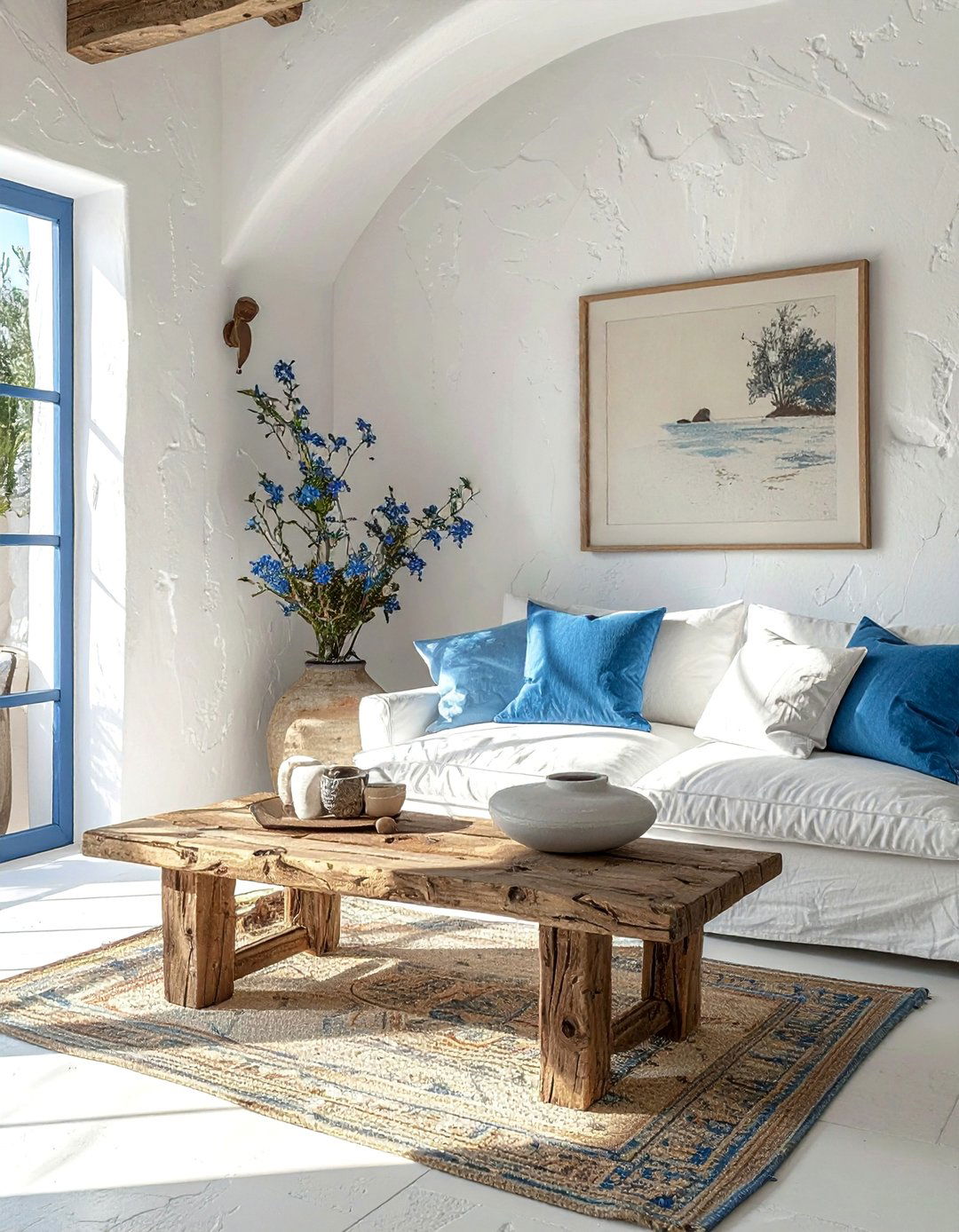
A fundamental element of Greek-style homes is the use of whitewashed plaster walls. This technique not only reflects the intense Mediterranean sun, keeping interiors cool, but also creates a bright, airy, and clean backdrop for other design elements. The slightly uneven texture of the plaster adds depth, character, and a rustic, handmade feel that is central to the aesthetic. This simple yet powerful choice enhances natural light, making even smaller spaces feel more open and expansive. Pairing these brilliant white walls with contrasting colors, such as cobalt blue or natural wood tones, establishes the iconic look that is instantly recognizable as Greek-inspired design.
2. Iconic Blue Domed Roofs
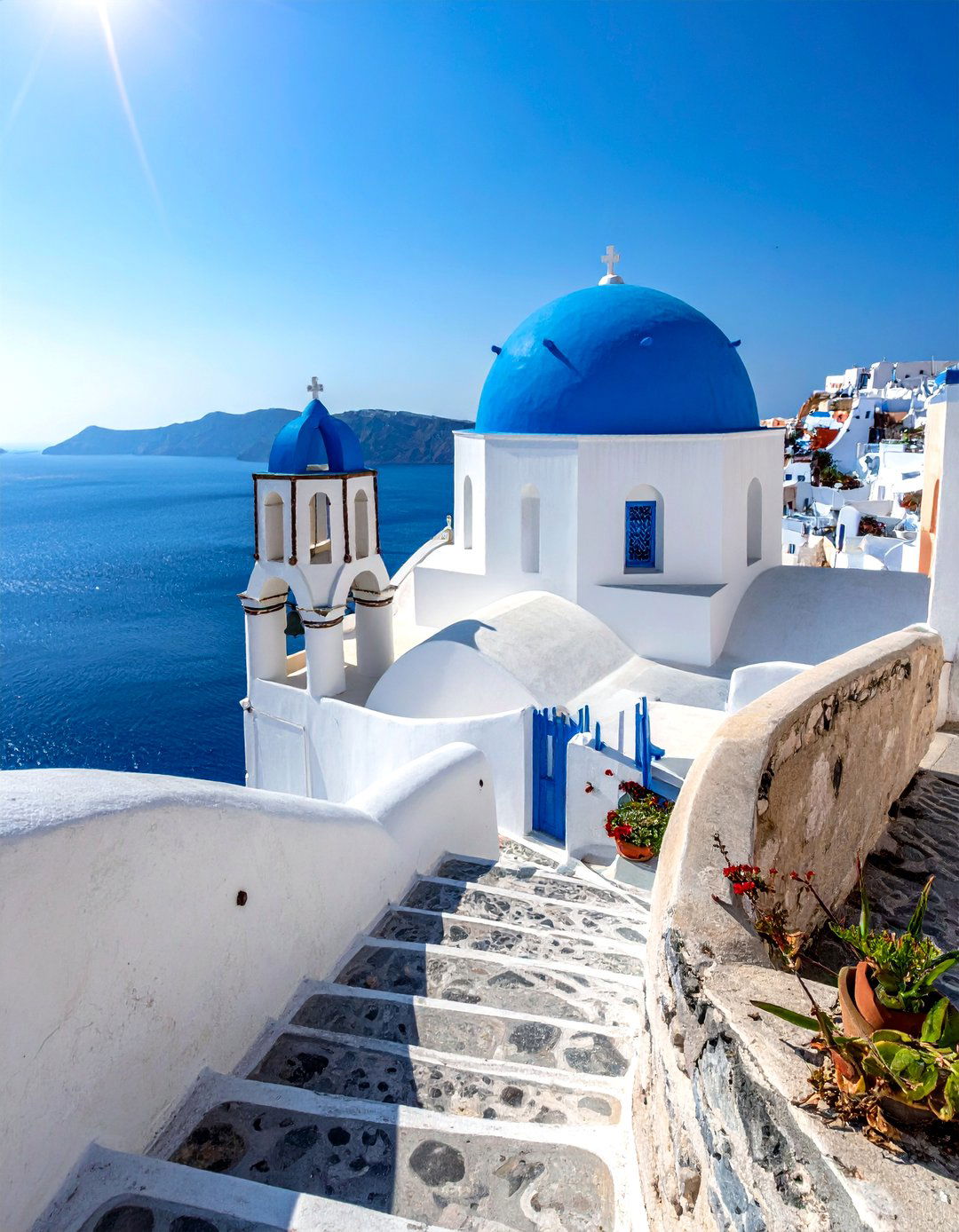
While more common in Cycladic architecture, incorporating the iconic blue dome is a hallmark of Greek style, often seen on islands like Santorini. For a residential home, this feature can be adapted as an accent on a smaller structure, such as a garden shed, a gazebo, or a decorative entryway arch. The vibrant cobalt blue, set against stark white walls, creates a breathtaking contrast that mirrors the Aegean sky and sea. This architectural statement piece instantly transports the viewer to the Greek isles, serving as a powerful visual anchor for the entire property and a bold declaration of its Mediterranean design inspiration.
3. Natural Stone Flooring
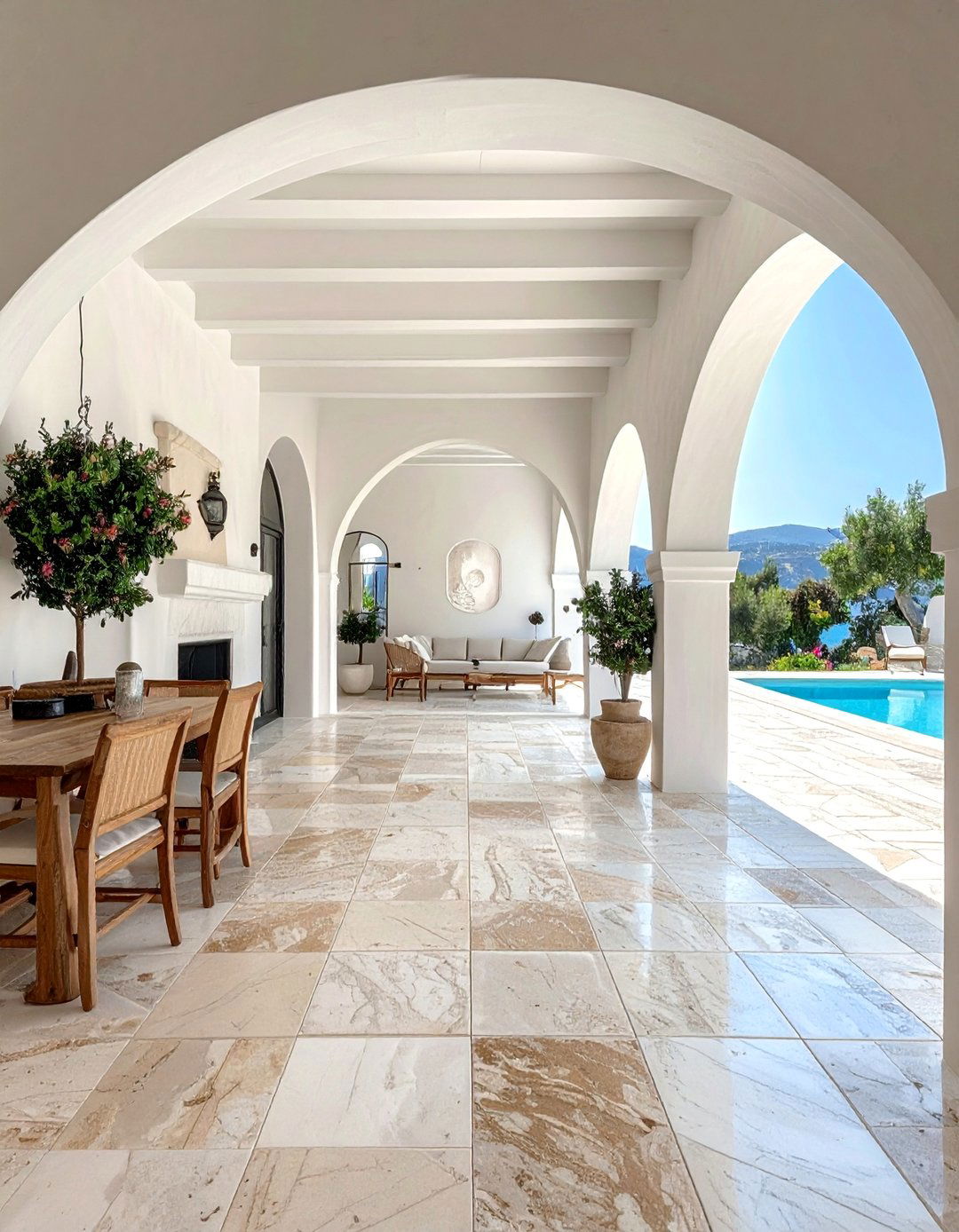
To achieve an authentic Greek-style home, natural stone flooring is an essential choice. Materials like limestone, travertine, or light-colored marble provide a cool underfoot surface, which is practical for warmer climates and perfectly aligns with the Mediterranean aesthetic. These floors offer a seamless transition from indoor to outdoor living spaces, enhancing the connection to nature. The subtle, earthy tones and unique textures of natural stone add a layer of rustic elegance and timeless durability. This flooring choice grounds the bright, airy feel of the whitewashed walls, contributing to a balanced and harmonious interior that feels both organic and sophisticated.
4. Exposed Wooden Ceiling Beams
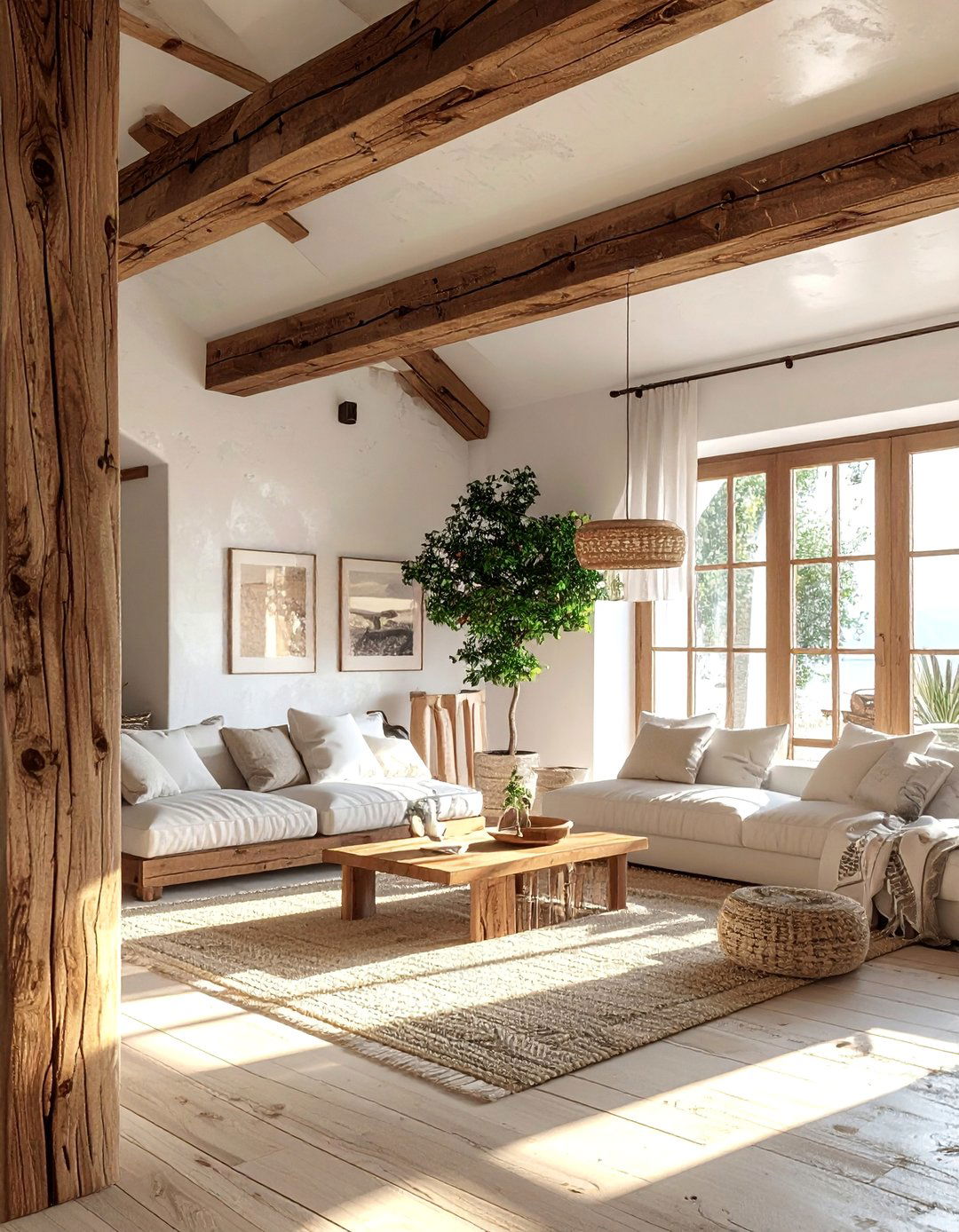
Bringing warmth and rustic character into a Greek-style home, exposed wooden ceiling beams are a classic feature. These beams, often left in their natural, unstained state or given a light wash, create a beautiful contrast against the crisp white walls and ceilings. They add architectural interest and a sense of history, reminiscent of traditional island villas. The organic texture of the wood introduces a natural element that balances the coolness of stone floors and plaster walls. This design choice draws the eye upward, making ceilings appear higher while contributing to the cozy, grounded, and authentically Mediterranean atmosphere of the space.
5. Arched Doorways and Niches
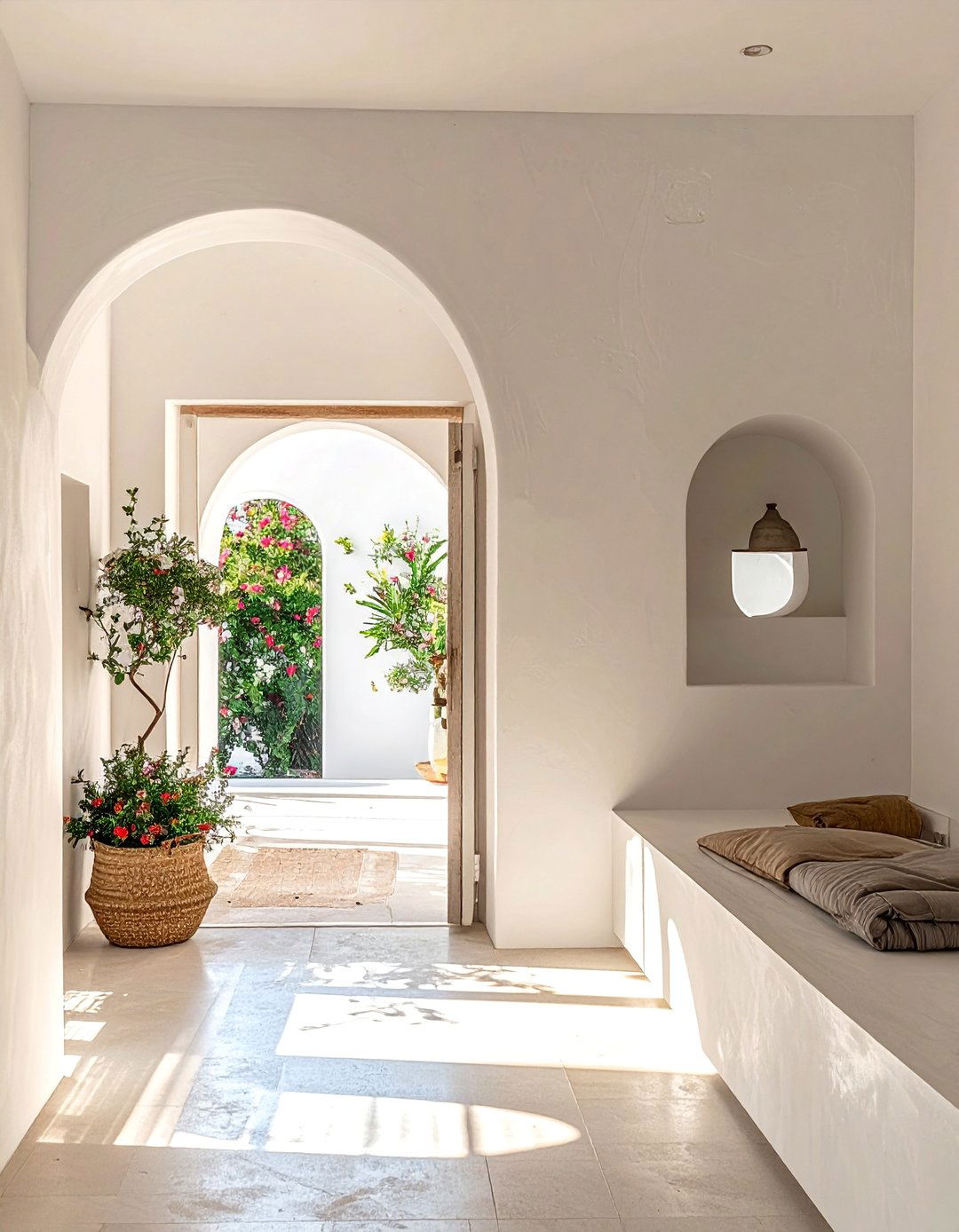
The use of graceful arches is a defining architectural feature in Greek-style homes. Softly curved doorways, windows, and built-in wall niches break the monotony of straight lines, adding a sense of fluidity and organic form. Arched passages create an inviting flow between rooms, while recessed niches serve as perfect display spots for pottery, sculptures, or other decorative items. This element, often finished with the same smooth plaster as the walls, contributes to the cave-like, sculptural quality of the interiors. It is a subtle yet impactful detail that enhances the home’s authentic Mediterranean character and architectural elegance.
6. Simple, Rustic Wooden Furniture
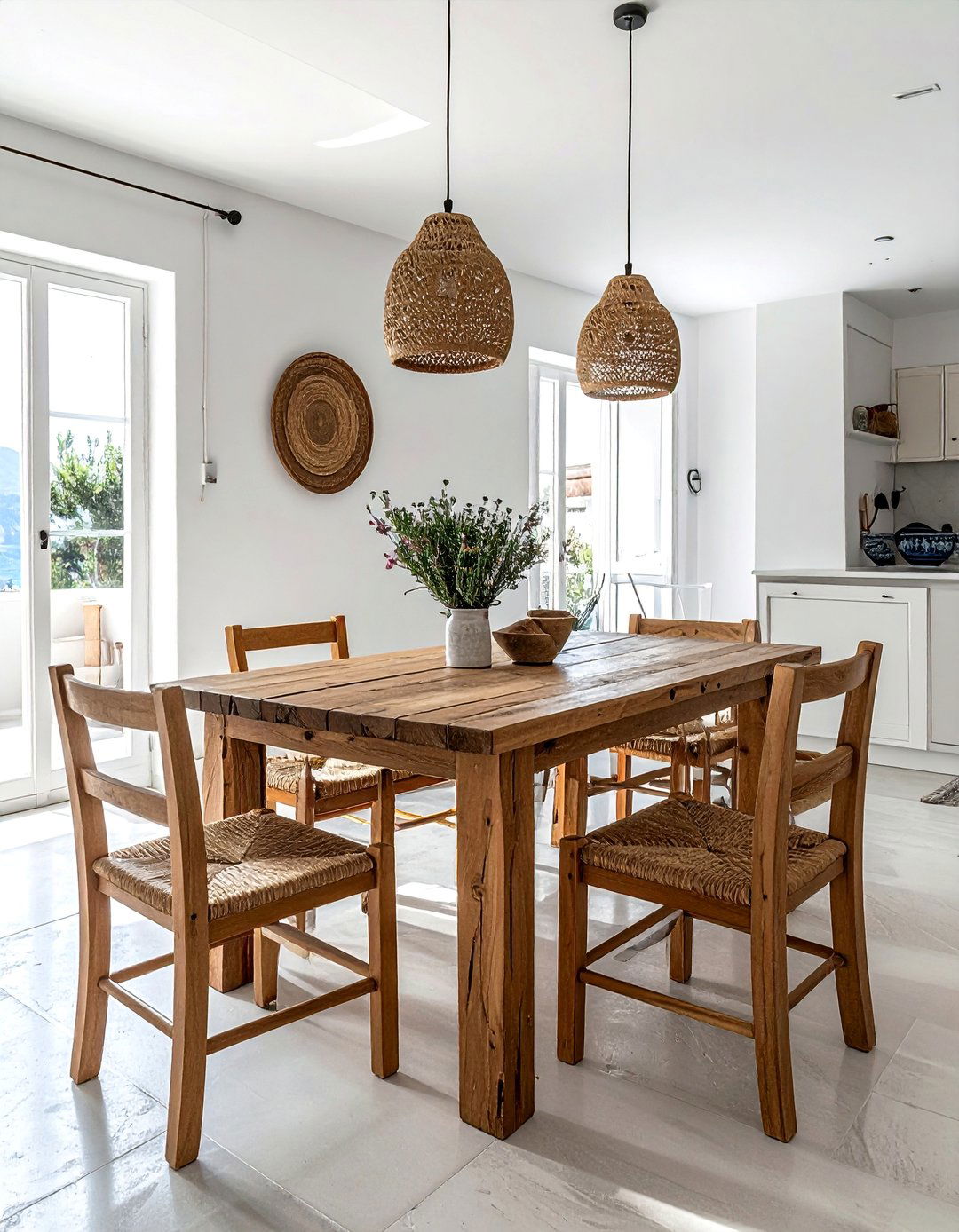
For furnishing a Greek-style home, simplicity and natural materials are key. Choose rustic wooden furniture with clean lines and a handcrafted feel. Pieces made from weathered or light-toned woods like pine, olive, or cypress complement the aesthetic perfectly. Think of a simple, sturdy dining table, wooden chairs with woven seats, or a minimalist bed frame. The focus is on functionality and unadorned beauty, allowing the natural grain and texture of the wood to stand out. This approach avoids ornate details, ensuring the furniture enhances the serene and uncluttered atmosphere rather than overwhelming it with unnecessary complexity.
7. Built-in Plaster Seating and Shelving
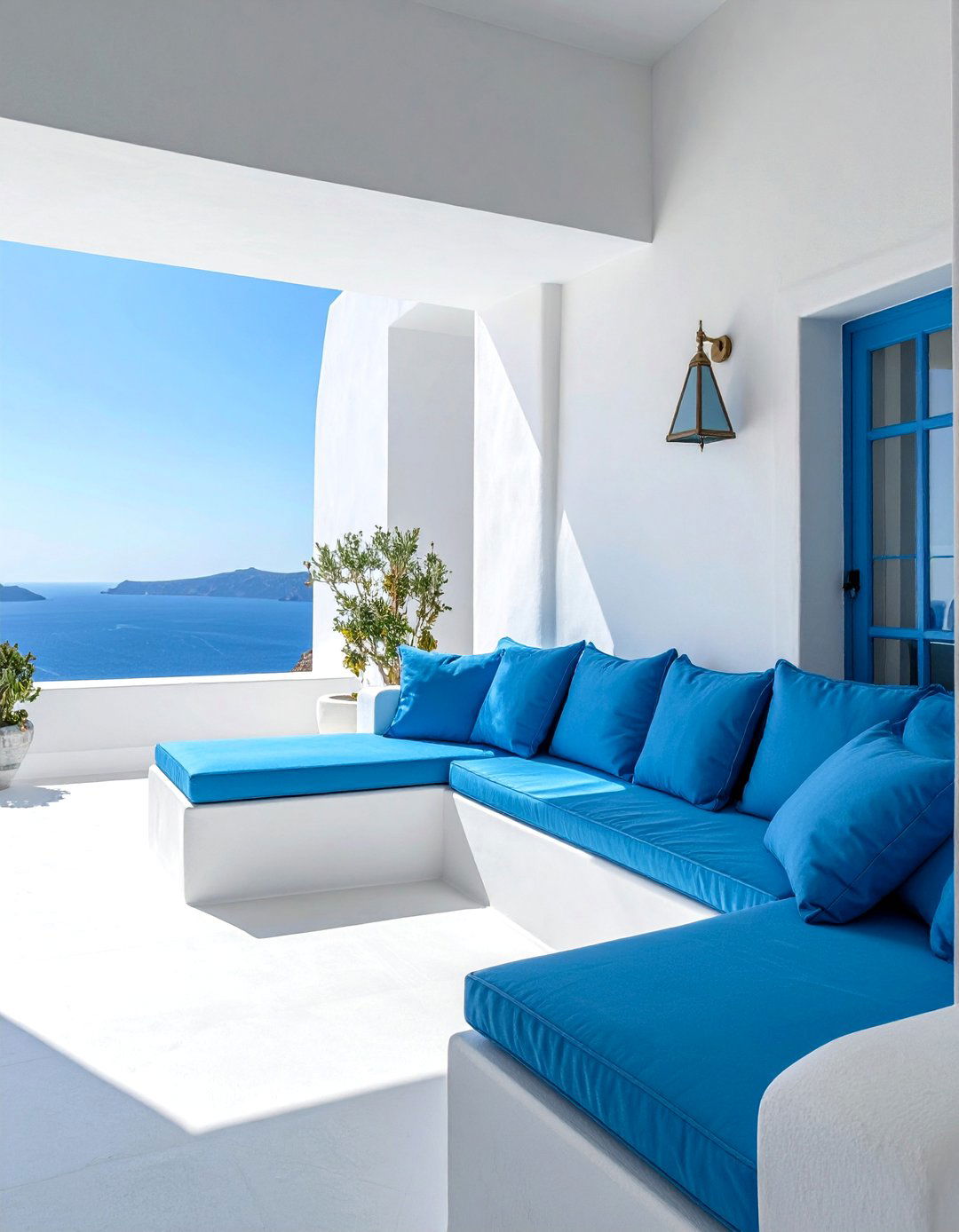
An iconic feature of Greek island homes is the integration of built-in furniture made directly from plaster. This includes flowing, organic-shaped seating areas like banquettes in living rooms or nooks, as well as shelves and storage niches carved directly into the walls. This technique creates a seamless, sculptural look that makes the furniture feel like a natural extension of the home’s architecture. Not only is it a space-saving solution, but it also enhances the minimalist and cohesive aesthetic. These smooth, whitewashed forms contribute to the cool, cave-like tranquility that is so characteristic of Cycladic interiors.
8. Terracotta Pots and Amphorae
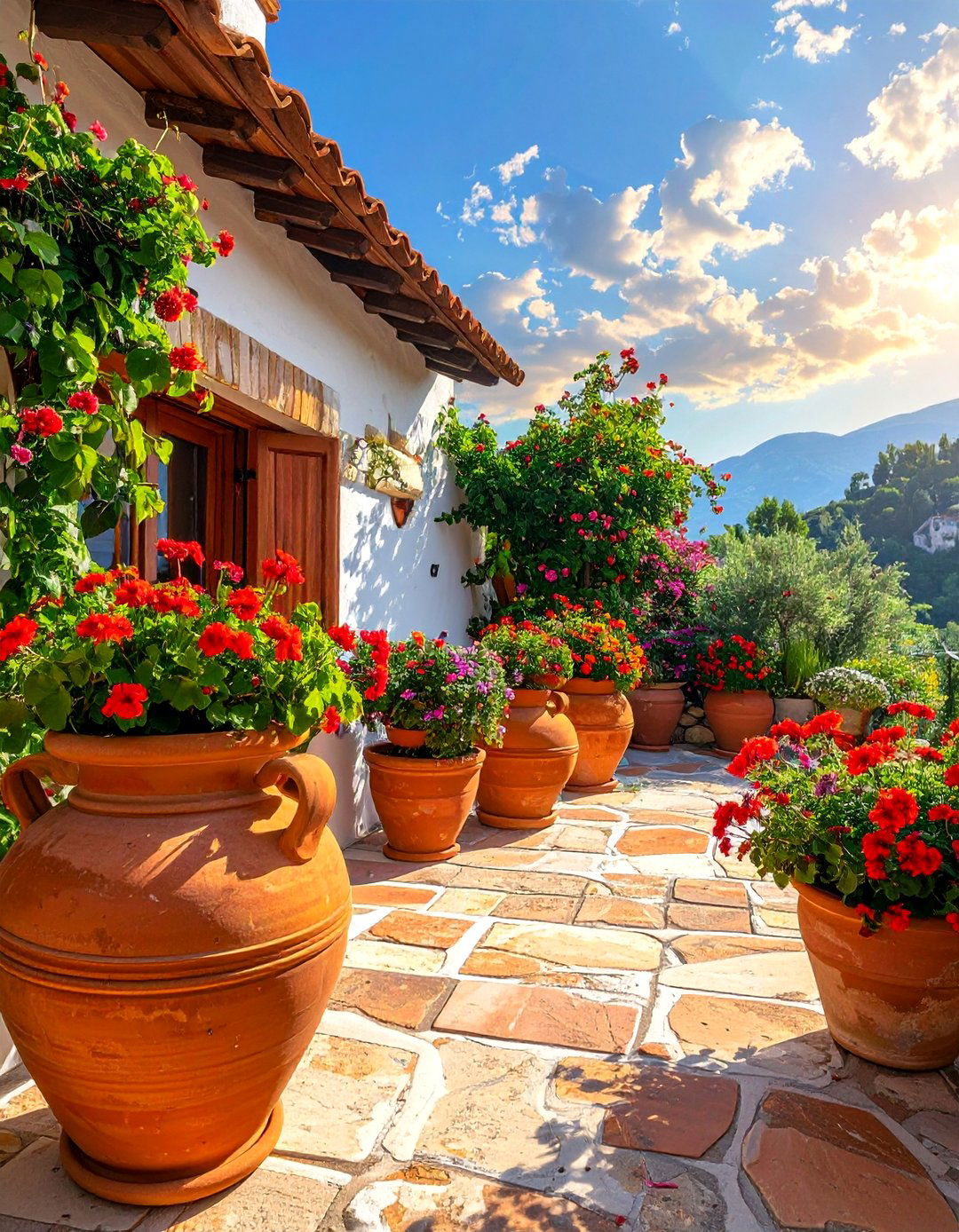
To add authentic decorative accents to a Greek-style home, incorporate terracotta pots and traditional amphorae. These earthy, reddish-brown clay vessels provide a warm, rustic contrast to the cool white and blue color scheme. Place large pots in courtyards, on balconies, or in corners of a room, planted with olive trees, bougainvillea, or geraniums. Smaller terracotta pieces can be used as decorative objects on shelves or tables. The unglazed, natural texture of these items connects the home to ancient traditions and the Mediterranean landscape, adding a touch of timeless, rustic charm to the overall design.
9. Minimalist Window Treatments
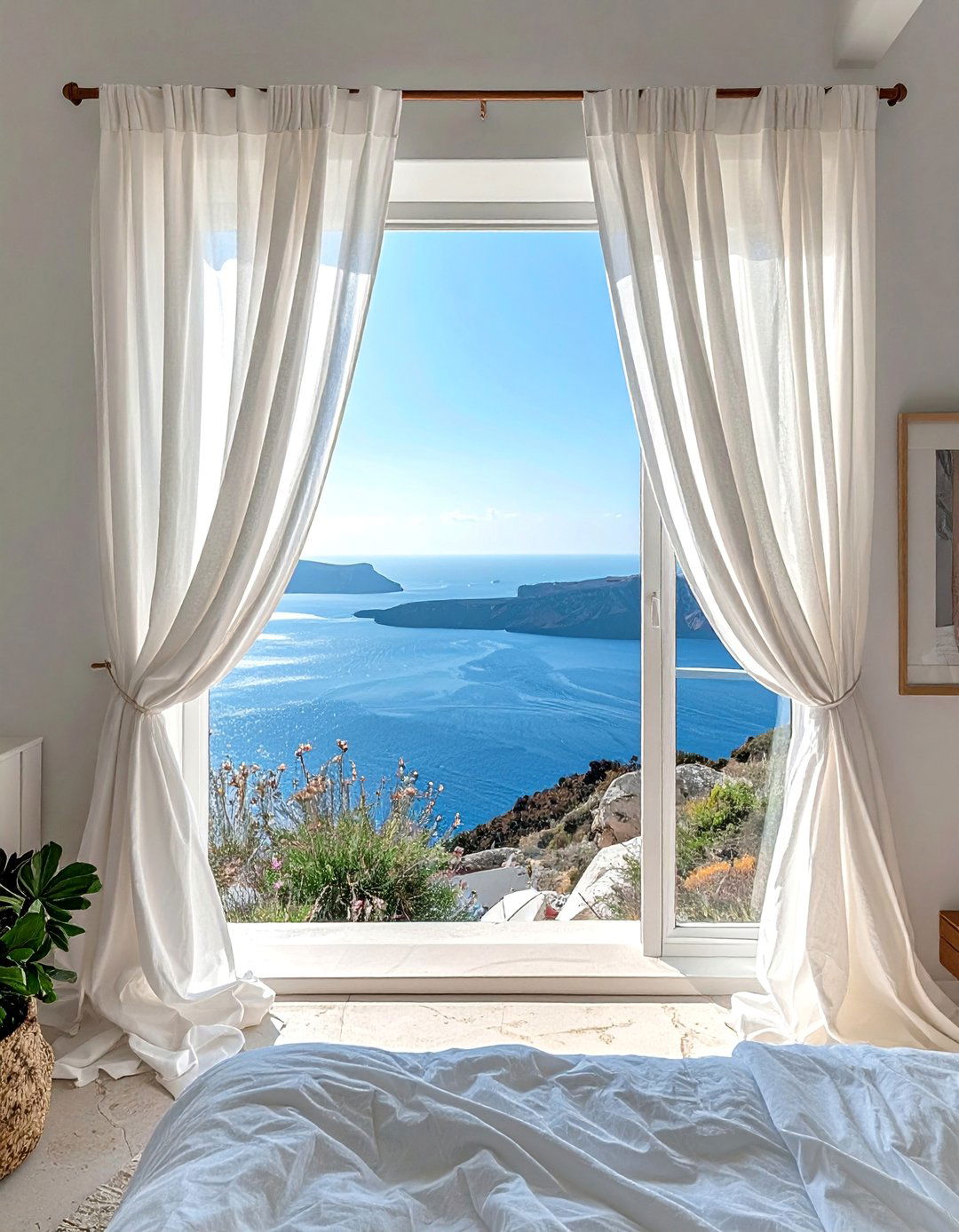
In a Greek-style home, the goal is to maximize natural light and maintain an airy, open feel. Therefore, window treatments should be minimal and unobtrusive. Opt for simple, sheer white linen or cotton curtains that billow gently in the breeze. These lightweight fabrics soften the sunlight without blocking it, preserving the bright atmosphere and connection to the outdoors. Avoid heavy drapes, elaborate patterns, or complex hardware. The focus is on simplicity and functionality, allowing the beauty of the architecture and the natural surroundings to take center stage, creating a serene and uncluttered look.
10. A Blue and White Color Palette
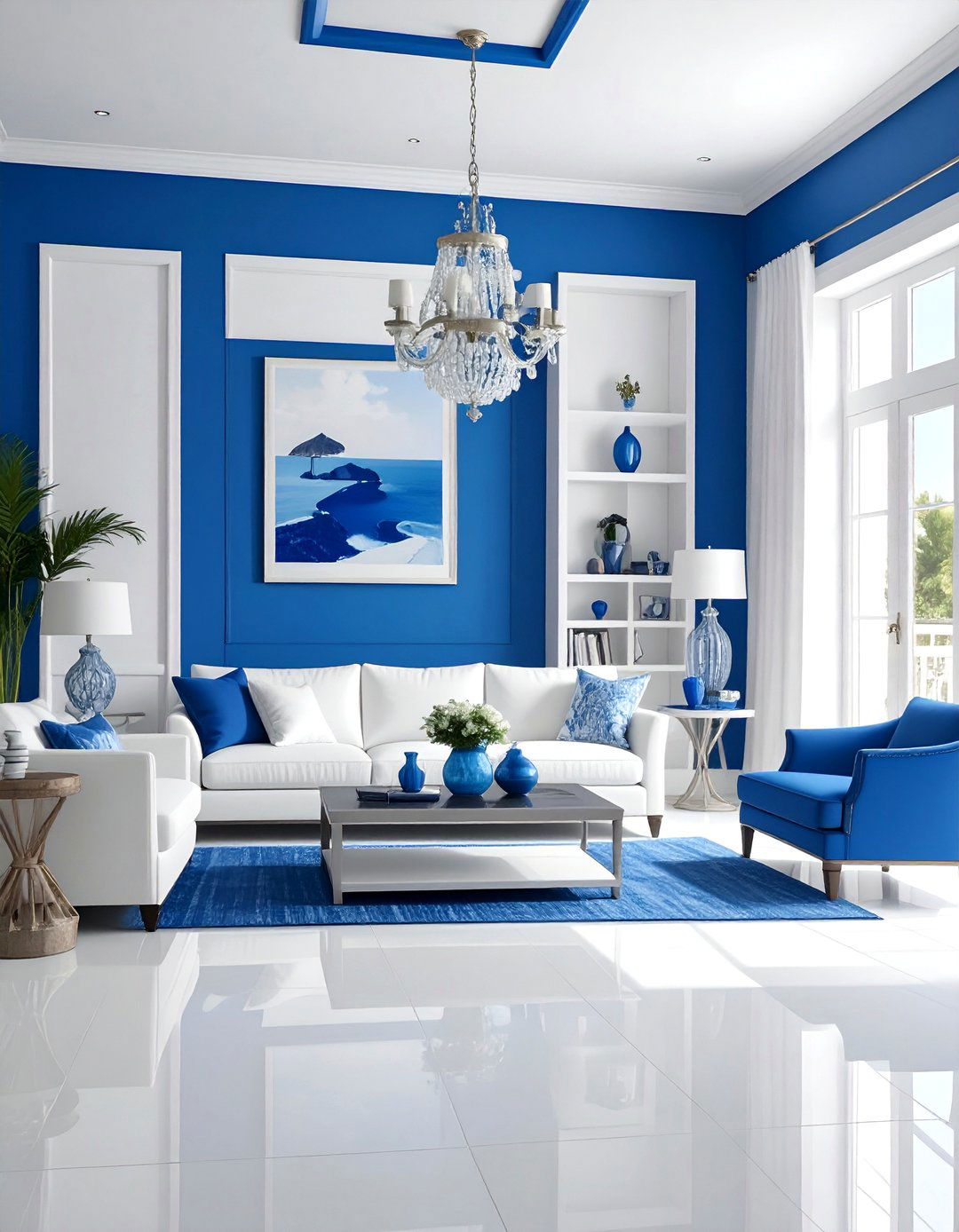
The quintessential Greek color palette is a crisp combination of brilliant white and vibrant blue. This pairing is inspired by the whitewashed villages set against the deep blue of the Aegean Sea and the sky. Use white as the dominant color for walls, ceilings, and large furniture pieces to create a bright and spacious foundation. Introduce shades of blue, from cobalt to turquoise, through accent pieces like doors, window shutters, textiles, and decorative ceramics. This classic duo creates a fresh, clean, and instantly recognizable look that is both calming and visually striking, perfectly capturing the essence of the Greek islands.
11. Outdoor Courtyards and Patios
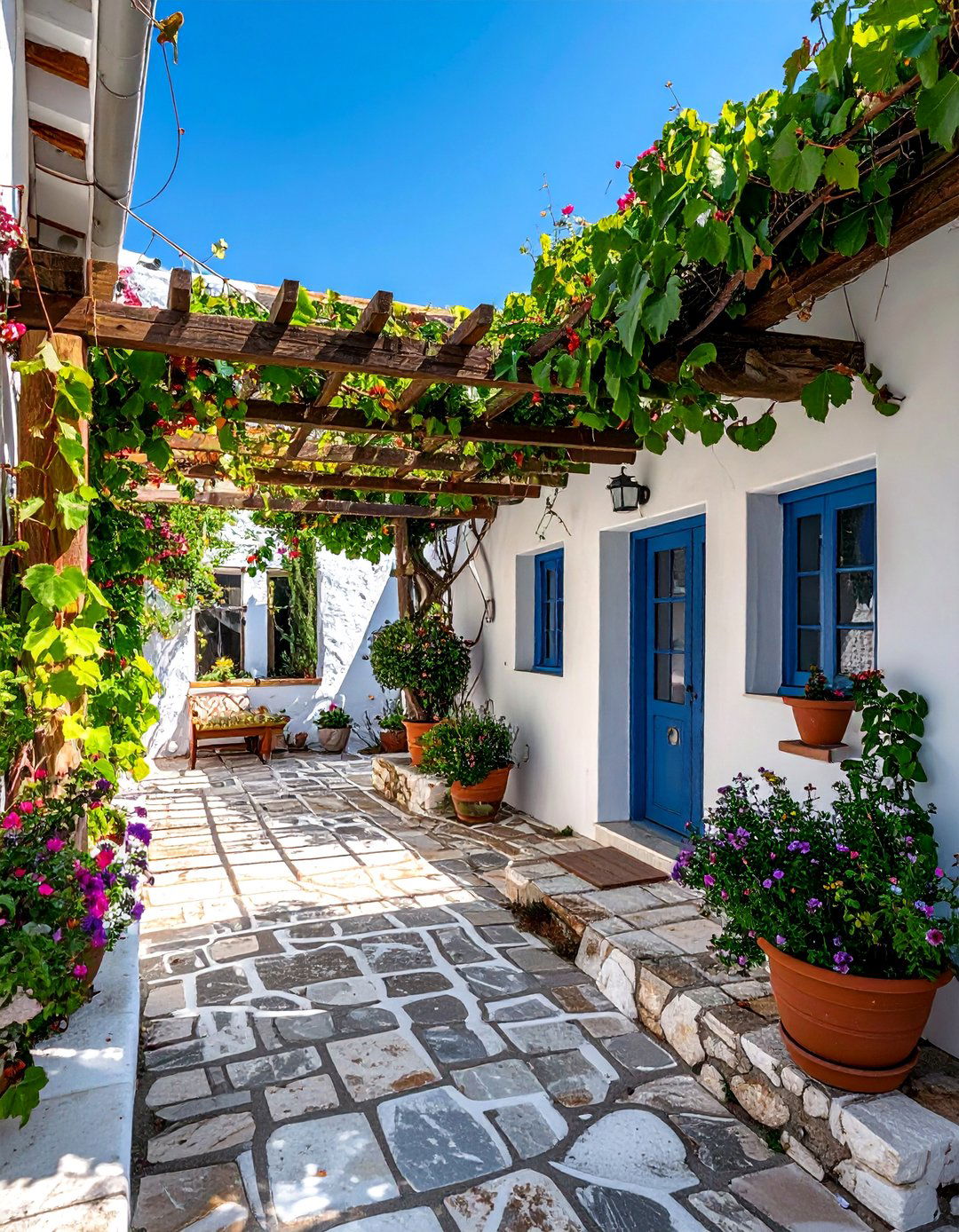
An essential component of the Greek lifestyle is seamless indoor-outdoor living, making a courtyard or patio a key feature. Design this space as an extension of your home with stone pavers, whitewashed walls, and a wooden pergola for shade. Furnish it with simple, rustic wooden benches, a wrought-iron table, and plenty of potted plants like geraniums and olive trees. This private oasis is perfect for dining al fresco, relaxing in the sun, or enjoying a cool evening breeze. It embodies the Mediterranean emphasis on connecting with nature and creating tranquil spaces for relaxation and social gatherings.
12. Bougainvillea and Climbing Plants
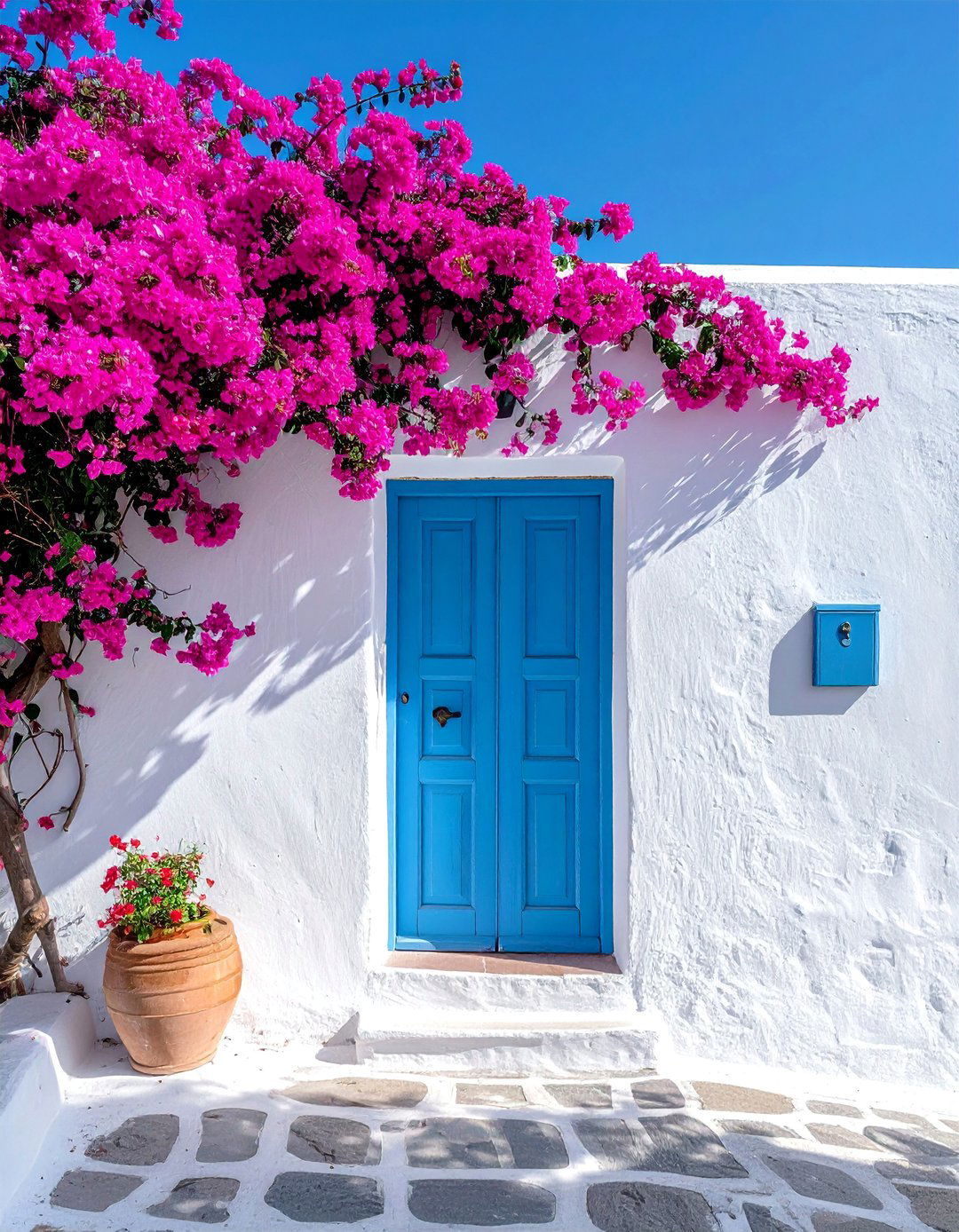
To bring vibrant color and natural beauty to a Greek-style home, encourage the growth of bougainvillea and other climbing plants. The brilliant fuchsia, red, or orange blossoms of bougainvillea create a stunning contrast against whitewashed exterior walls, instantly evoking the look of a Mediterranean villa. Train these climbers to grow over pergolas, archways, and along balcony railings. Other suitable plants include jasmine for its fragrant scent or grapevines for a rustic touch. This living decoration softens the architecture, adds a splash of vivid color, and reinforces the harmonious connection between the home and its natural surroundings.
13. Wrought Iron Details
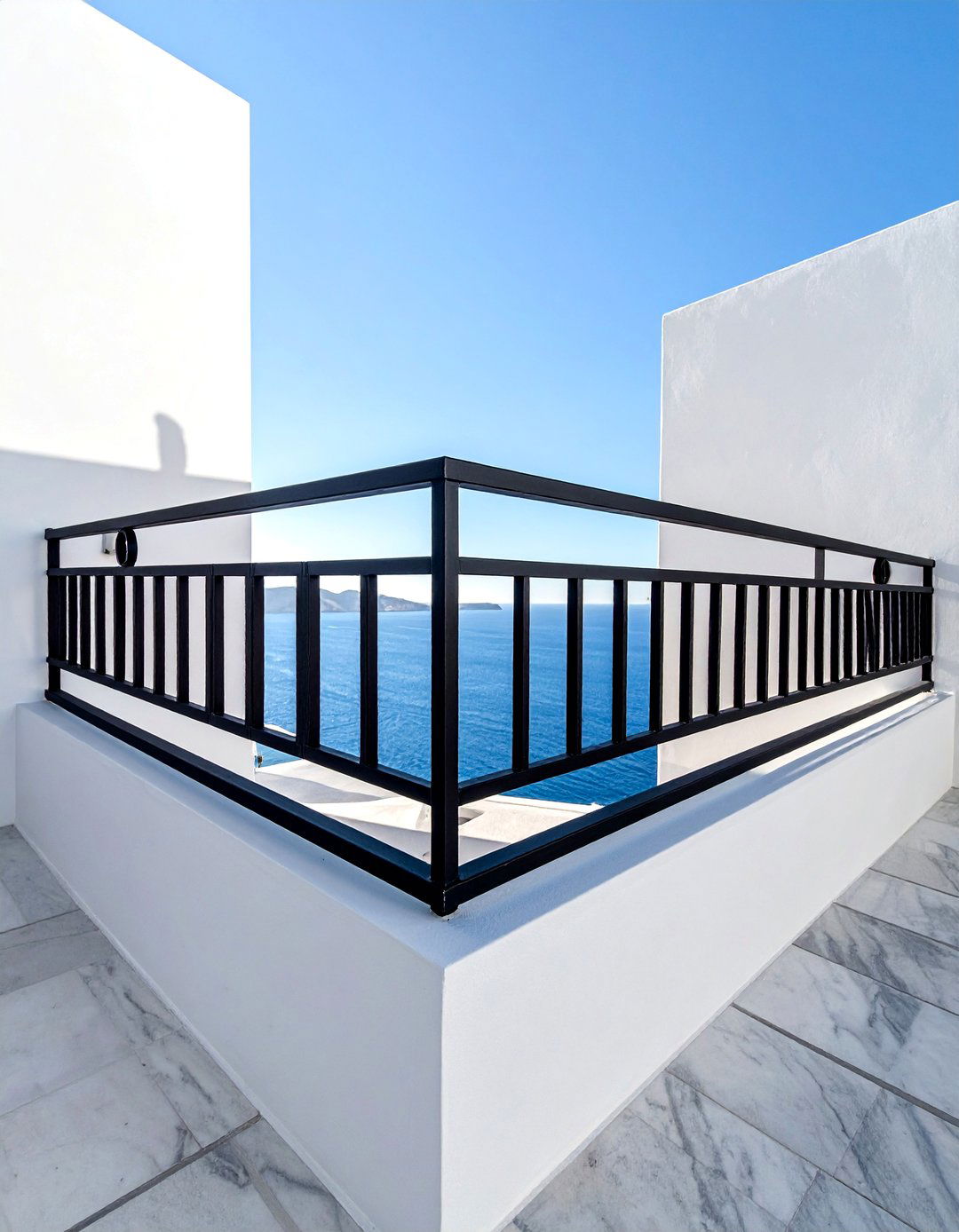
Subtle yet impactful, wrought iron details add a touch of traditional craftsmanship to a Greek-style home. Incorporate this material in the form of simple, elegant balcony railings, window grilles, or light fixtures like sconces and lanterns. The dark, slender lines of the iron provide a graceful contrast to the thick, white plaster walls. Look for designs that are understated and functional, avoiding overly ornate or heavy patterns. These elements add a layer of security and artistry without detracting from the minimalist aesthetic, contributing to the home’s timeless charm and authentic Mediterranean character.
14. Natural Fiber Textiles
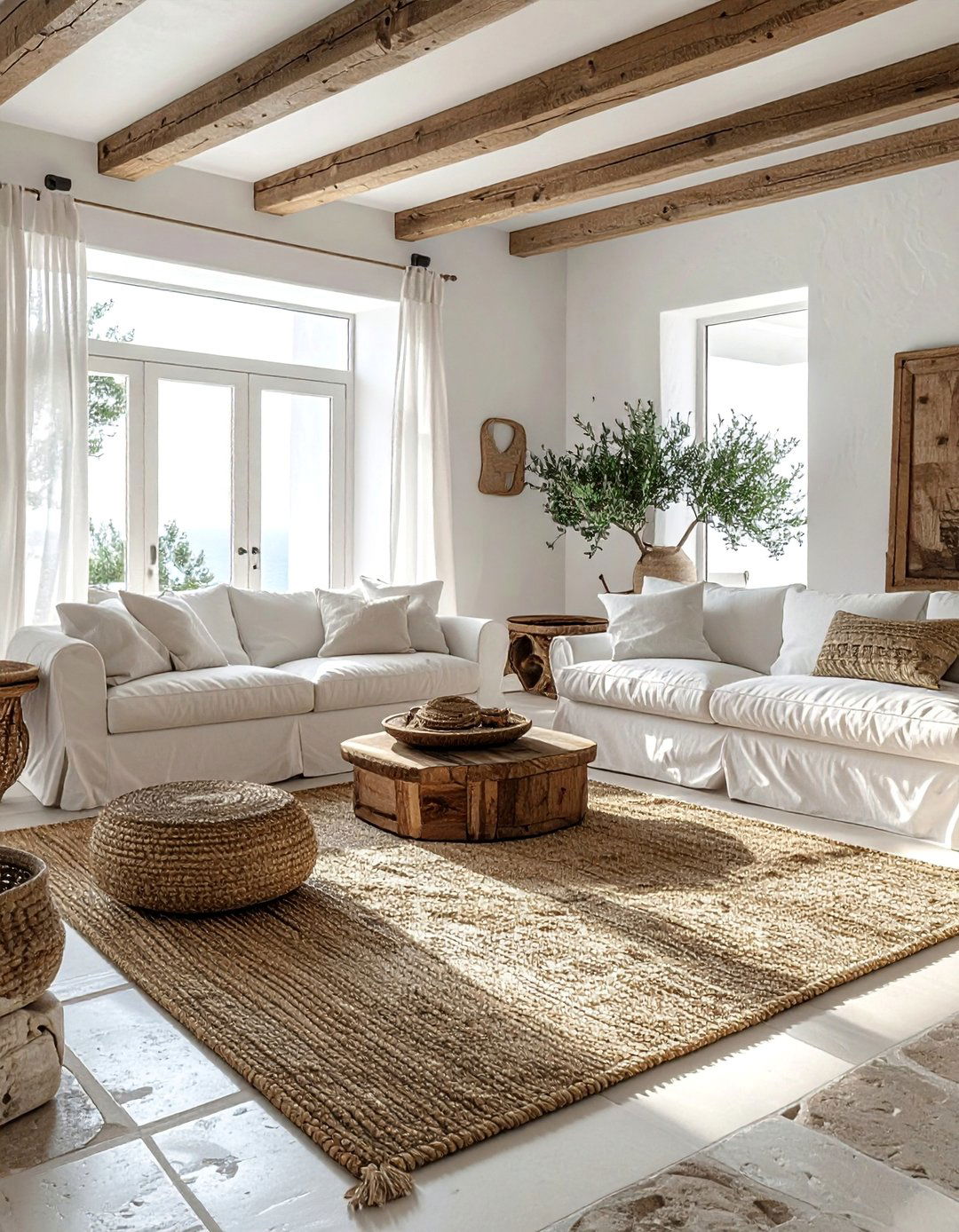
To enhance the tactile quality and comfort of a Greek-style home, use textiles made from natural fibers. Lightweight linen and cotton are perfect for curtains, bedding, and tablecloths, adding a soft, breezy feel to the interiors. For texture underfoot, choose area rugs made from jute, sisal, or woven wool. These materials introduce earthy tones and organic textures that complement the wood and stone elements throughout the home. Opt for solid colors, particularly whites, beiges, and soft blues, or simple striped patterns to maintain the clean, uncluttered aesthetic while adding warmth and coziness.
15. A Simple, Open-Plan Kitchen
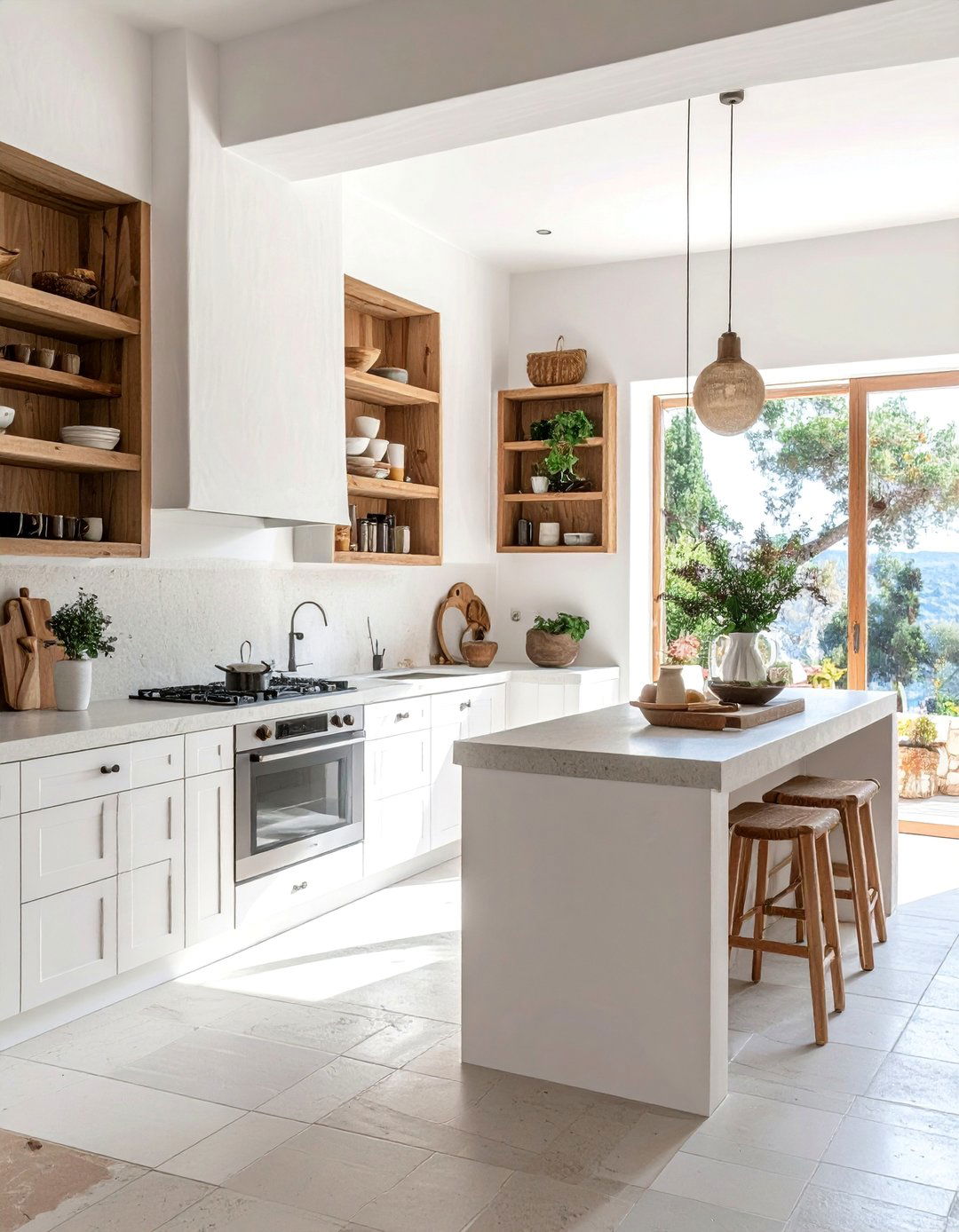
The kitchen in a Greek-style home is often the heart of the house, designed with simplicity and functionality in mind. An open-plan layout creates a sociable space that flows into the dining or living area. Feature plaster-finished cabinetry or simple wooden cupboards painted white or a soft blue. Open shelving is a popular choice for displaying rustic ceramics and glassware. Countertops made from light-colored marble, stone, or even smooth concrete add to the natural aesthetic. The overall look is uncluttered and practical, focusing on fresh ingredients and communal meal preparation, which is central to Mediterranean culture.
16. Pebble Mosaic Floors or Accents
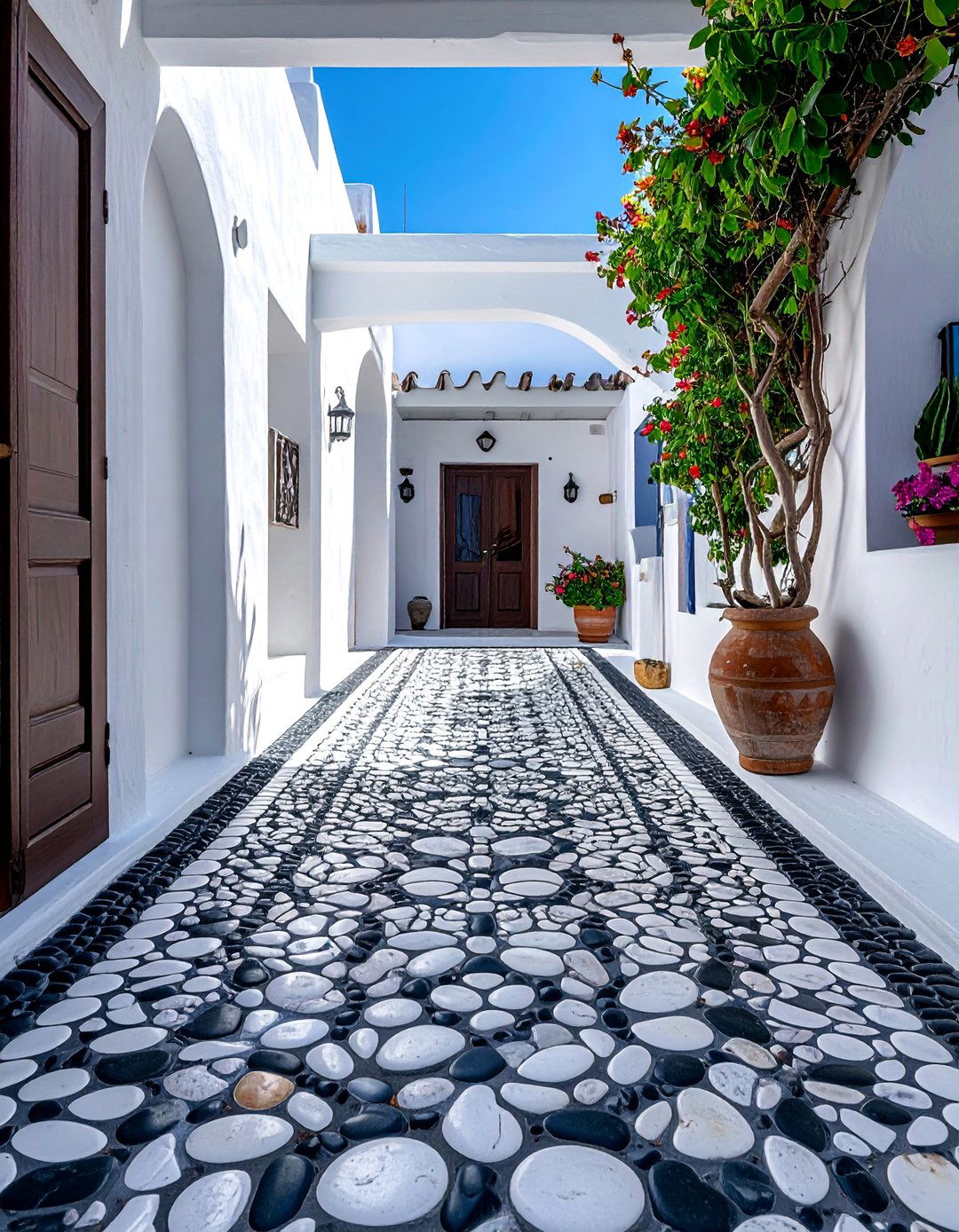
For a truly unique and artistic touch, incorporate pebble mosaics into your Greek-style home. This ancient craft, known as "chochlaki," can be used to create stunning patterns on floors in courtyards, entryways, or even shower stalls. The smooth, rounded stones are set in intricate designs, often in black and white or a mix of natural earth tones. Even a small mosaic accent, such as a border around a patio or a decorative panel set into a wall, can add immense character and a connection to Hellenic tradition. This feature provides beautiful texture and a handcrafted element that is both durable and timeless.
17. Use of Natural Light
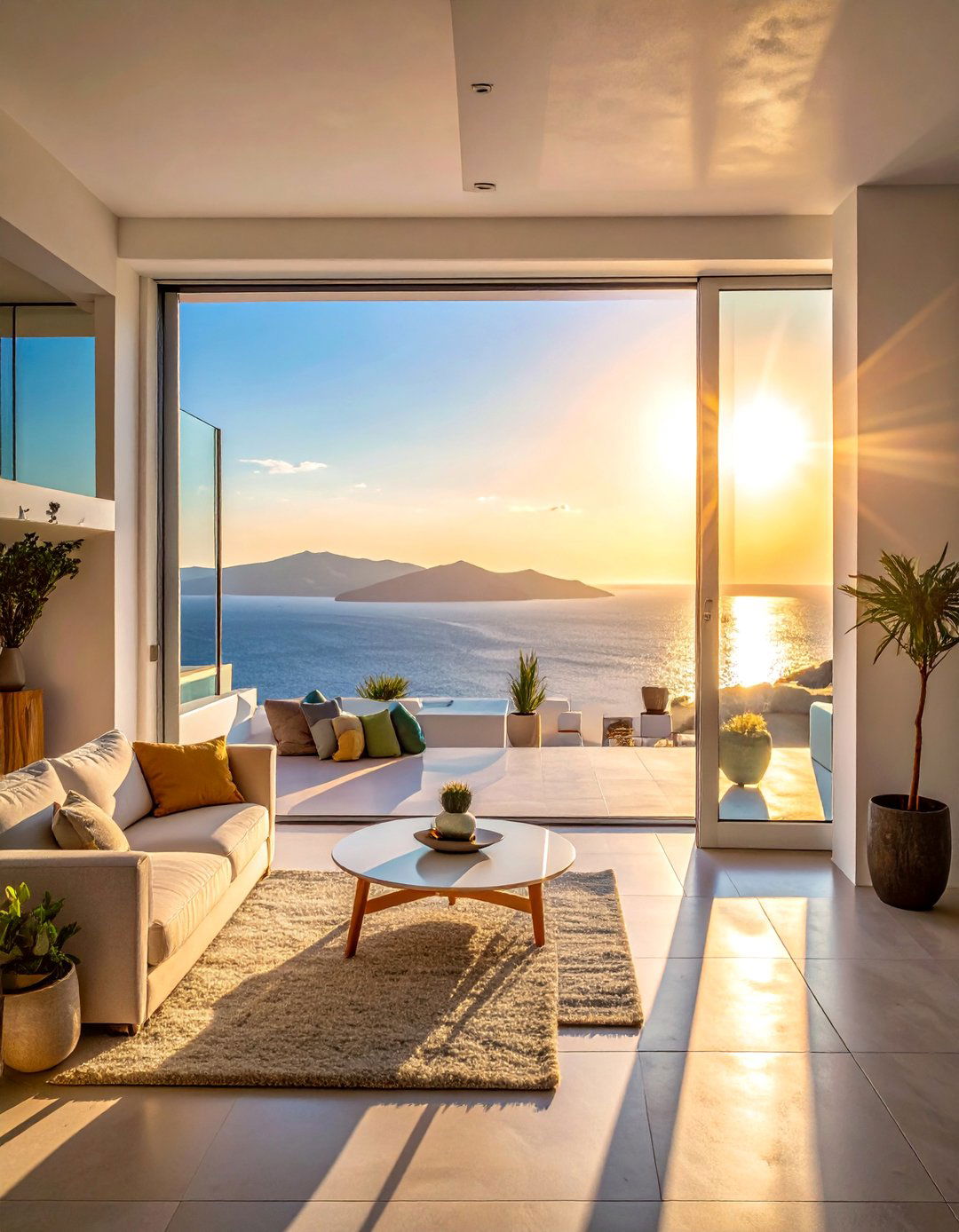
Maximizing natural light is a cornerstone of Greek-style design. The architecture is intentionally designed to capture and amplify sunlight, creating bright, uplifting interiors. Large, unadorned windows, glass doors, and strategically placed skylights help flood the space with light. The reflective quality of whitewashed walls further enhances this effect, bouncing light throughout the rooms and eliminating dark corners. This focus on natural illumination not only reduces the need for artificial lighting but also fosters a strong connection to the outdoors and the changing light of the day, contributing to the home's serene and airy ambiance.
18. An Outdoor Dining Area
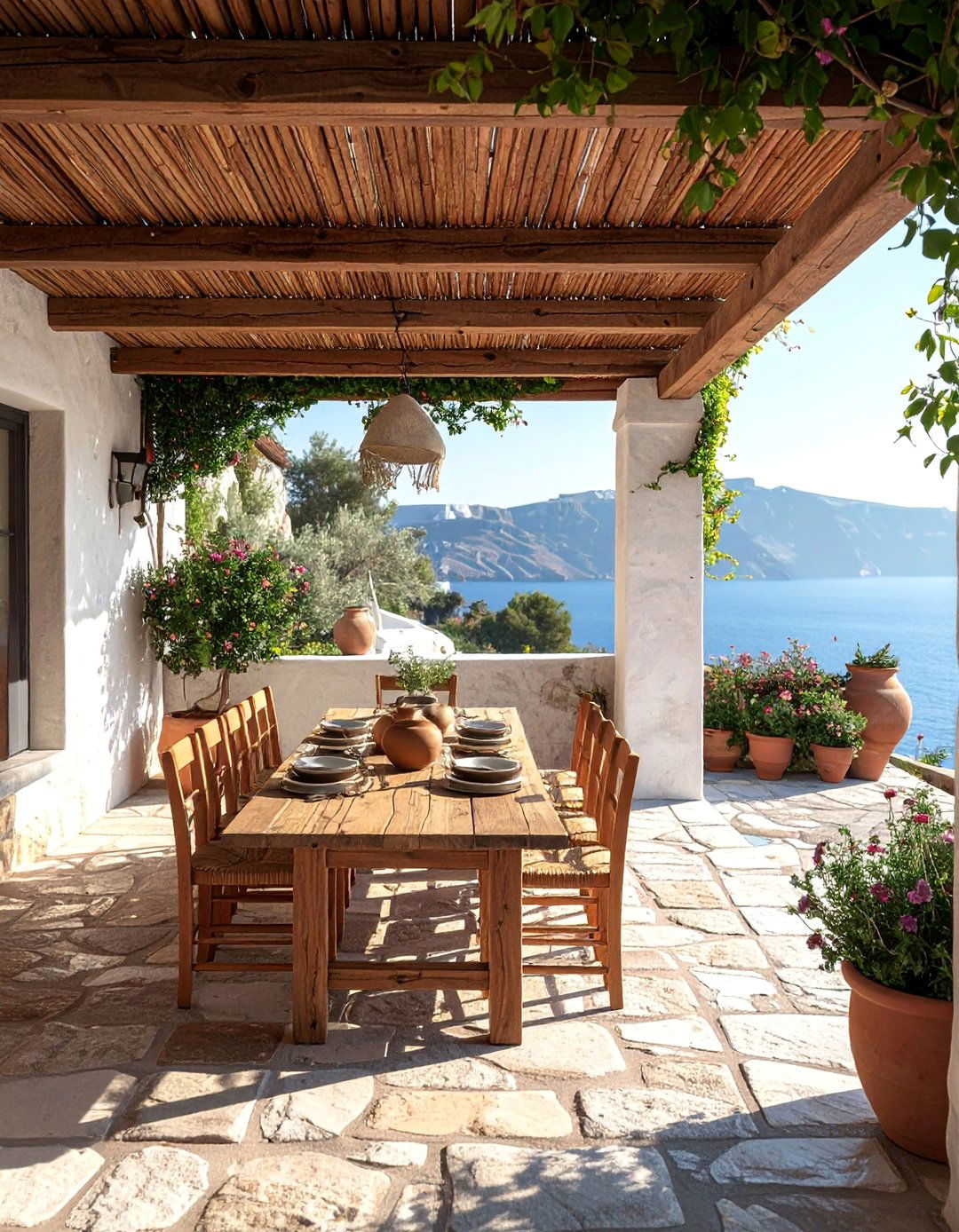
Reflecting the Mediterranean love for alfresco meals, a dedicated outdoor dining area is a must-have for a Greek-style home. Set up a space on a patio, terrace, or under a vine-covered pergola. A simple, sturdy wooden or wrought-iron table surrounded by matching chairs or benches is all you need. Keep the setting rustic and inviting with linen napkins, simple ceramic dinnerware, and lanterns or string lights for evening ambiance. This space encourages long, leisurely meals shared with family and friends, embracing the relaxed pace of life and the pleasure of enjoying good food in a beautiful natural setting.
19. Olive Trees in Pots or Gardens
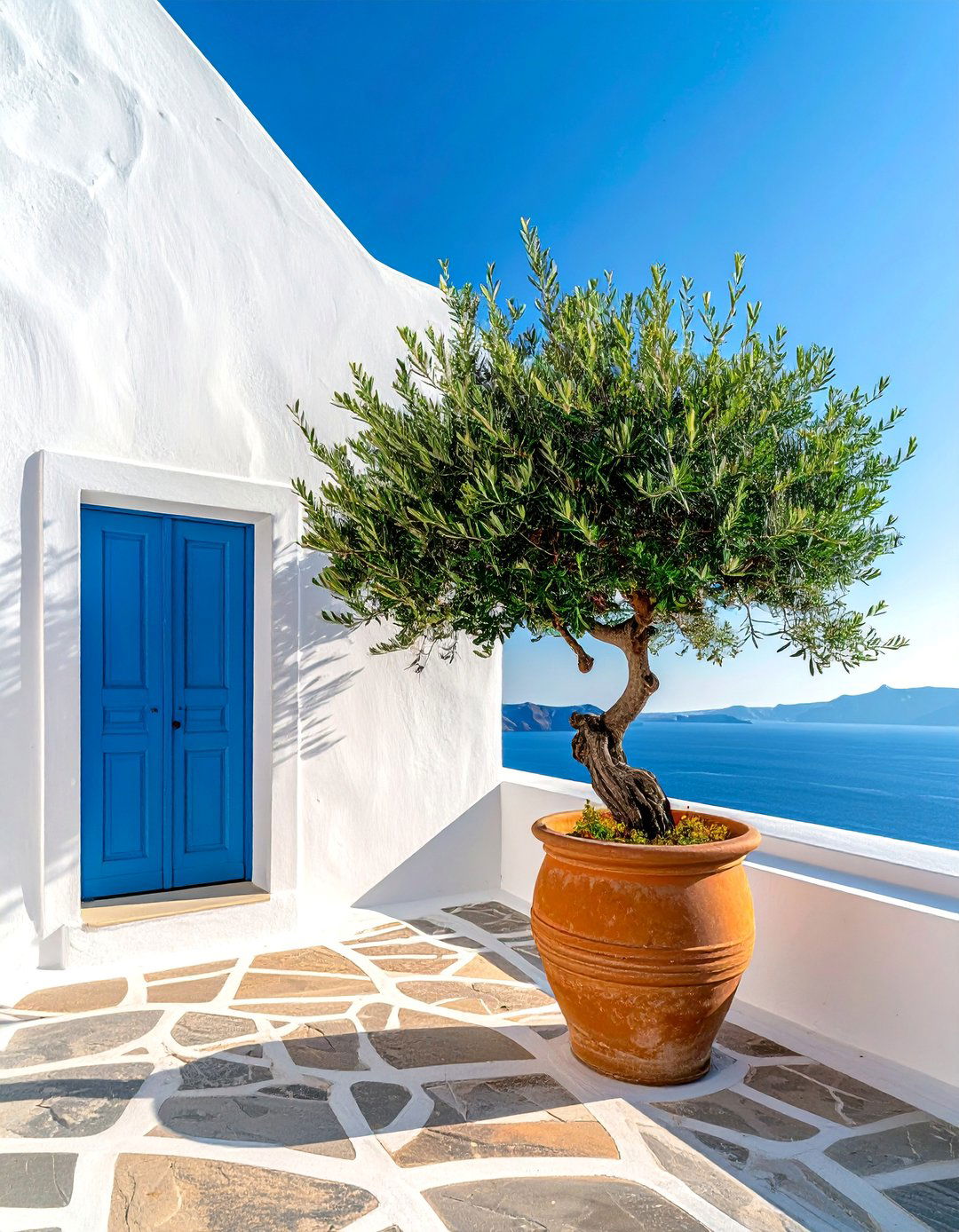
The olive tree is deeply symbolic of Greece and the Mediterranean, representing peace and prosperity. Incorporating olive trees into your landscape is a perfect way to capture the essence of a Greek-style home. Plant them in large terracotta pots to flank an entryway or to place on a sunny patio. If space allows, planting a small grove in the garden creates a beautifully serene and authentic atmosphere. The silvery-green leaves of the olive tree provide a soft, muted color that complements the white and blue palette, adding a touch of rustic elegance and a direct link to the Greek countryside.
20. Blue Painted Doors and Shutters
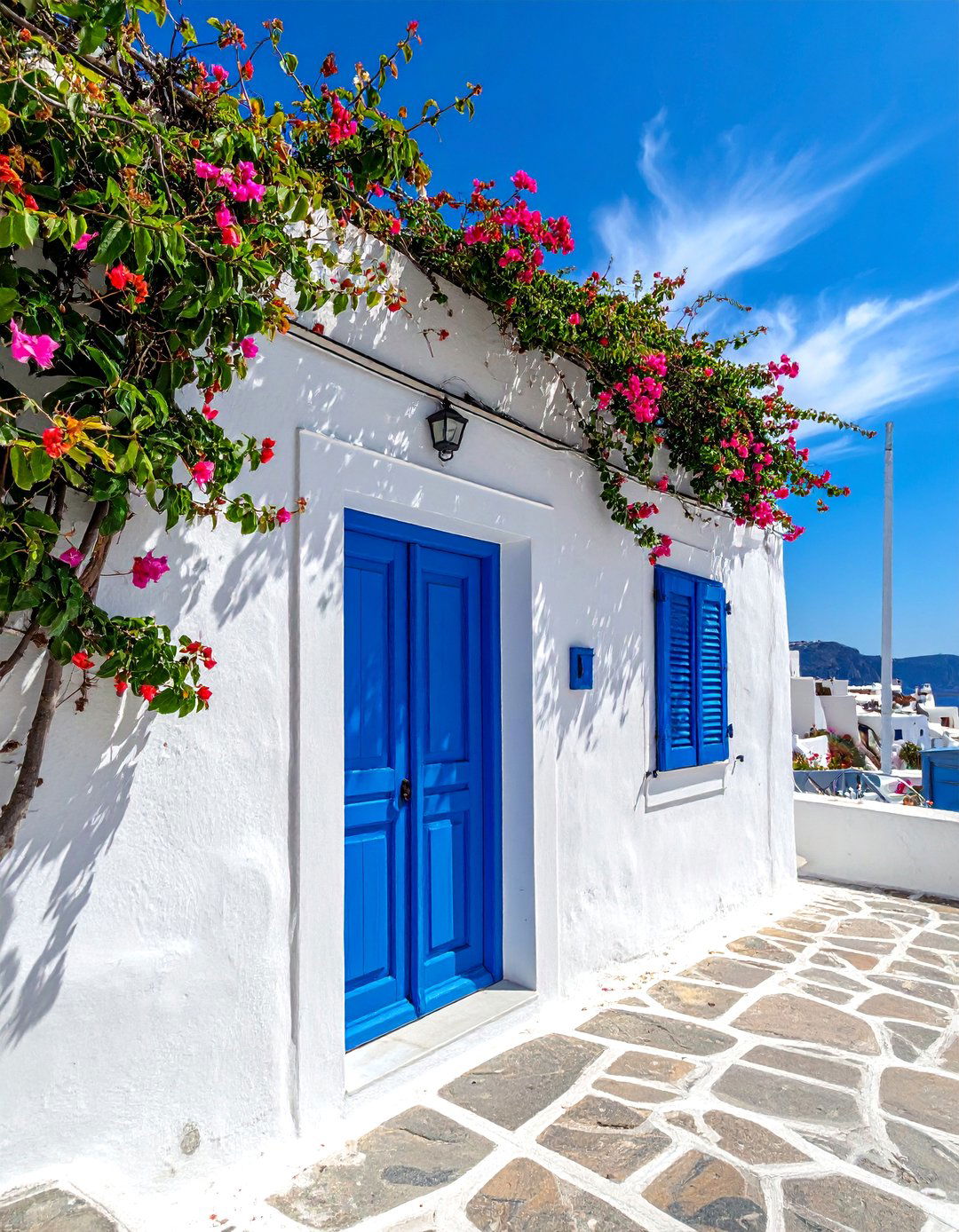
One of the most charming and recognizable features of Greek island architecture is the use of vibrant blue paint on doors and window shutters. This bold splash of color against the stark whitewashed walls creates a cheerful and picturesque contrast. Choose a rich shade of cobalt or a lighter sky blue to bring this classic look to your home's exterior. This simple design choice not only adds immense curb appeal but also serves as a key identifier of the Greek aesthetic. It’s a powerful and effective way to infuse your home with the spirit and visual identity of the Cyclades.
Conclusion:
Creating a Greek-style home is about embracing simplicity, natural beauty, and a seamless connection with the outdoors. By focusing on a core palette of white and blue, utilizing natural materials like stone and wood, and incorporating architectural elements such as arches and plaster built-ins, you can capture the serene essence of the Mediterranean. It’s a design philosophy that prioritizes light, air, and uncluttered living. These ideas serve as a guide to transforming your space into a tranquil, timeless retreat that echoes the rustic elegance and calming atmosphere of a sun-drenched Greek villa.

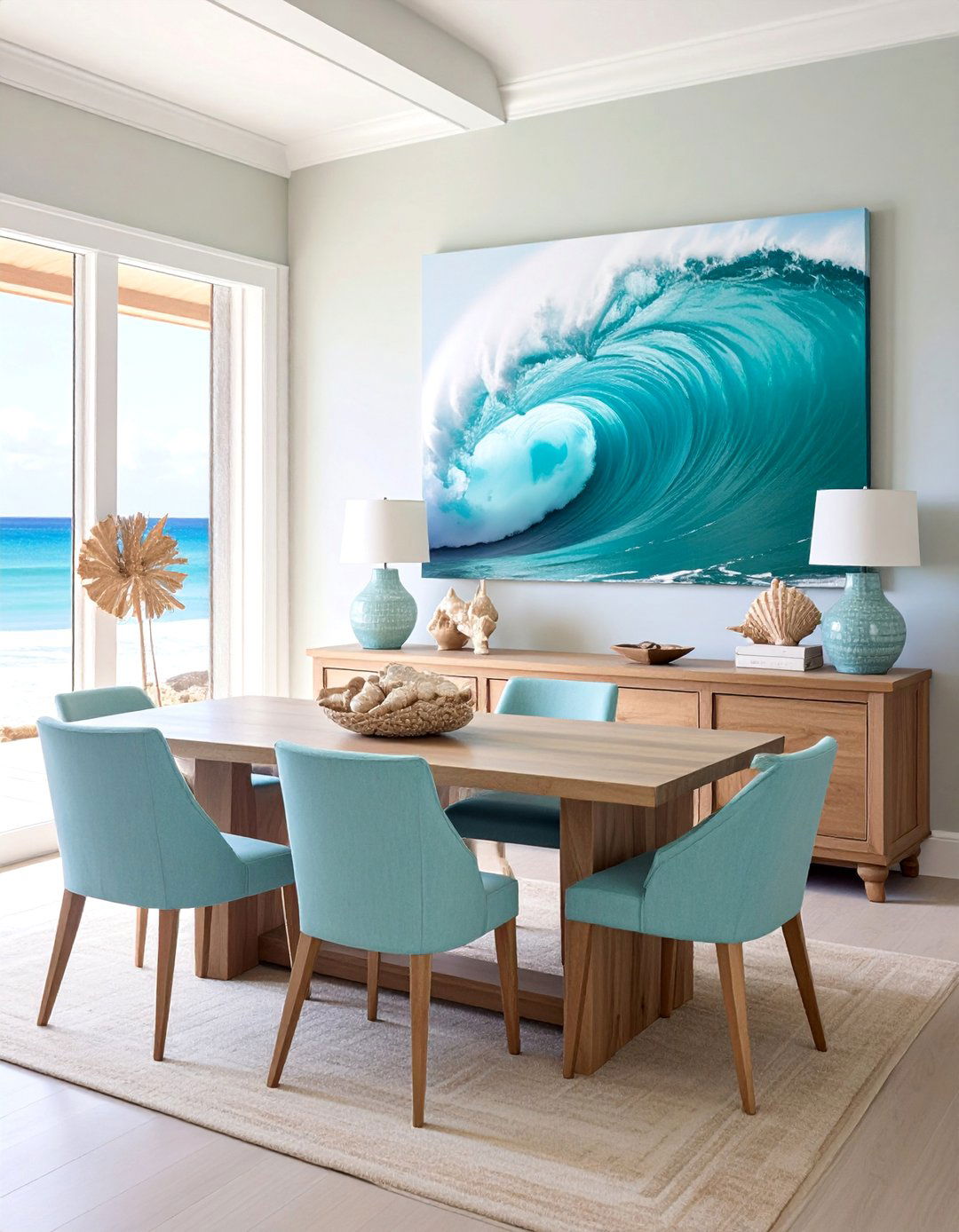
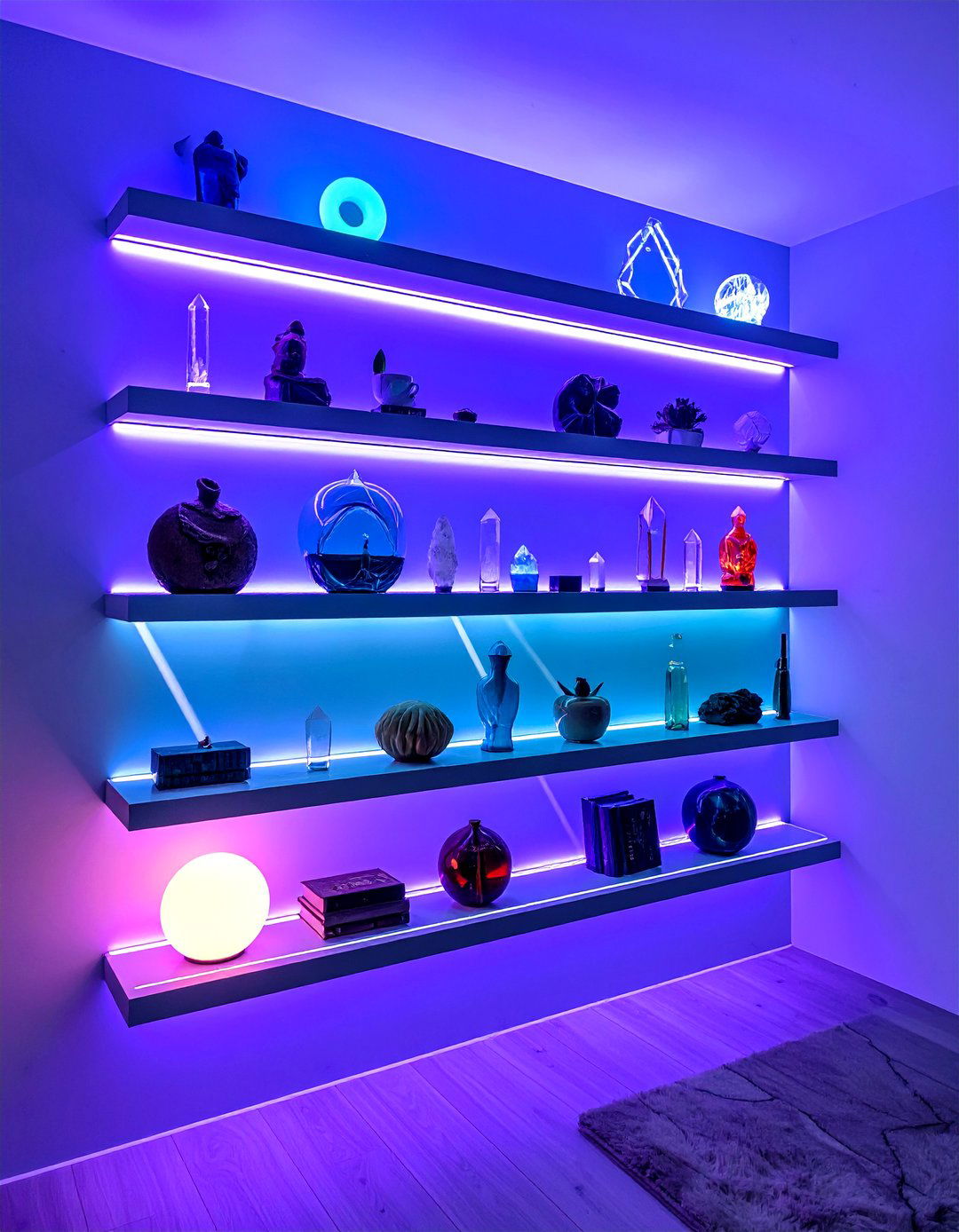
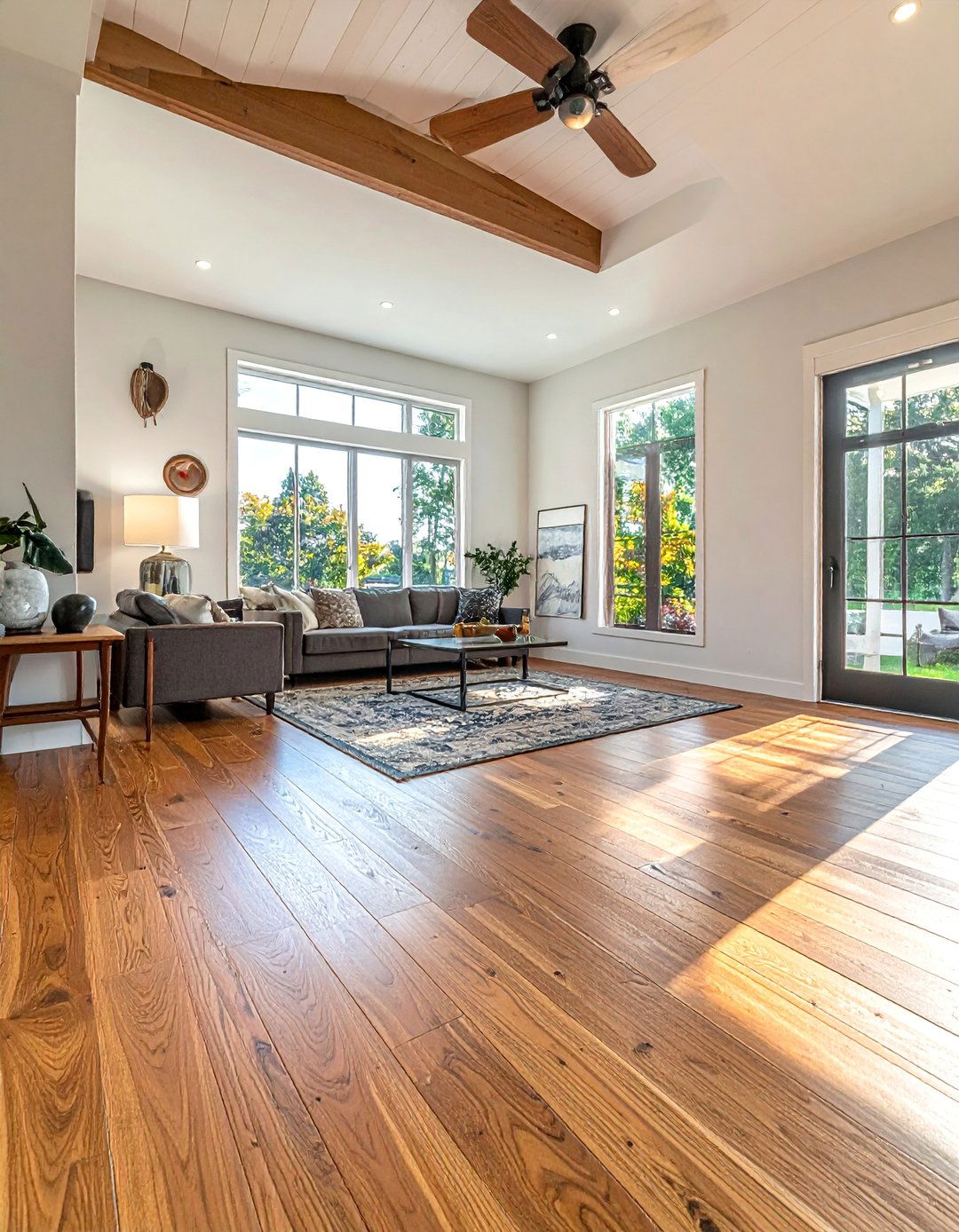
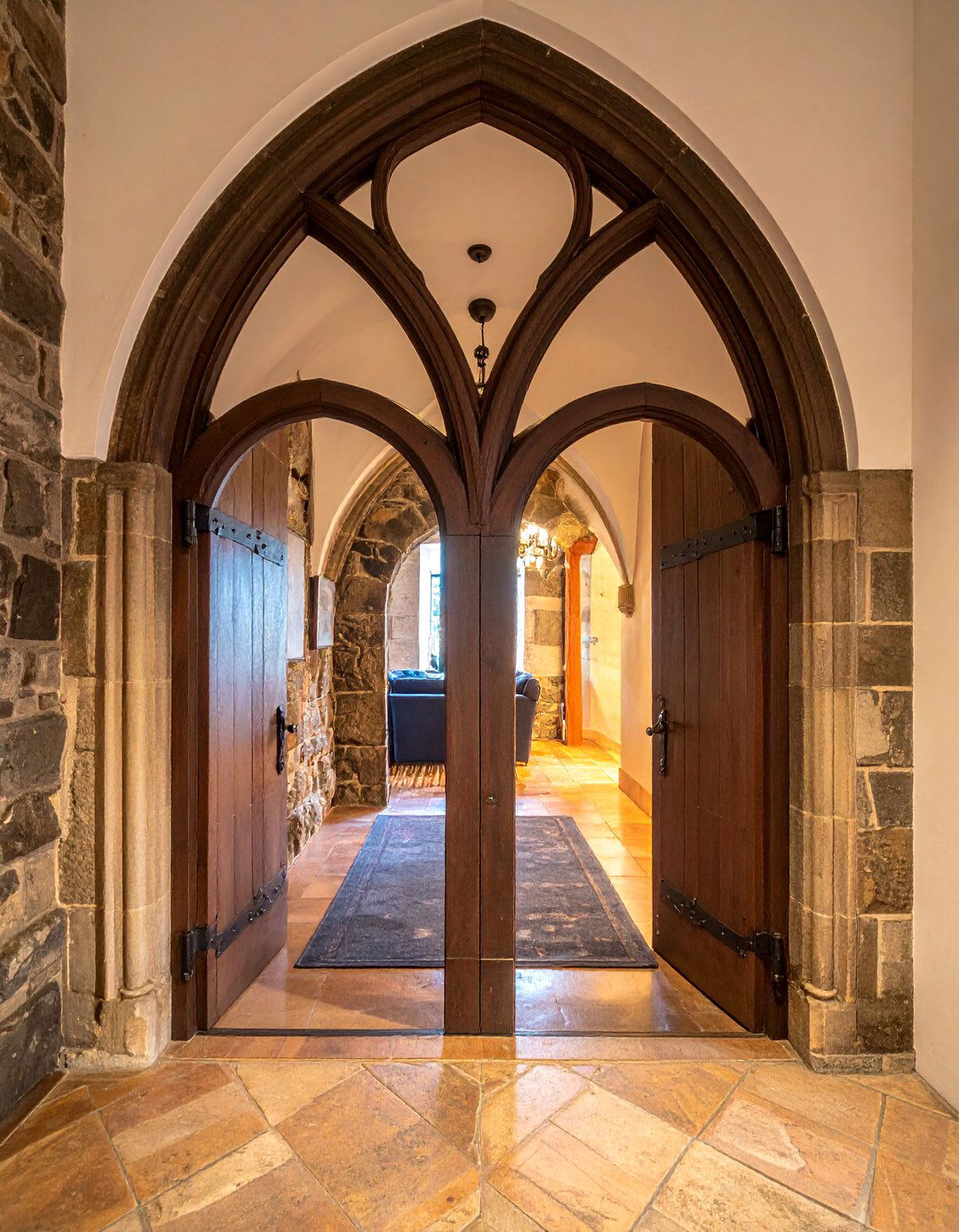
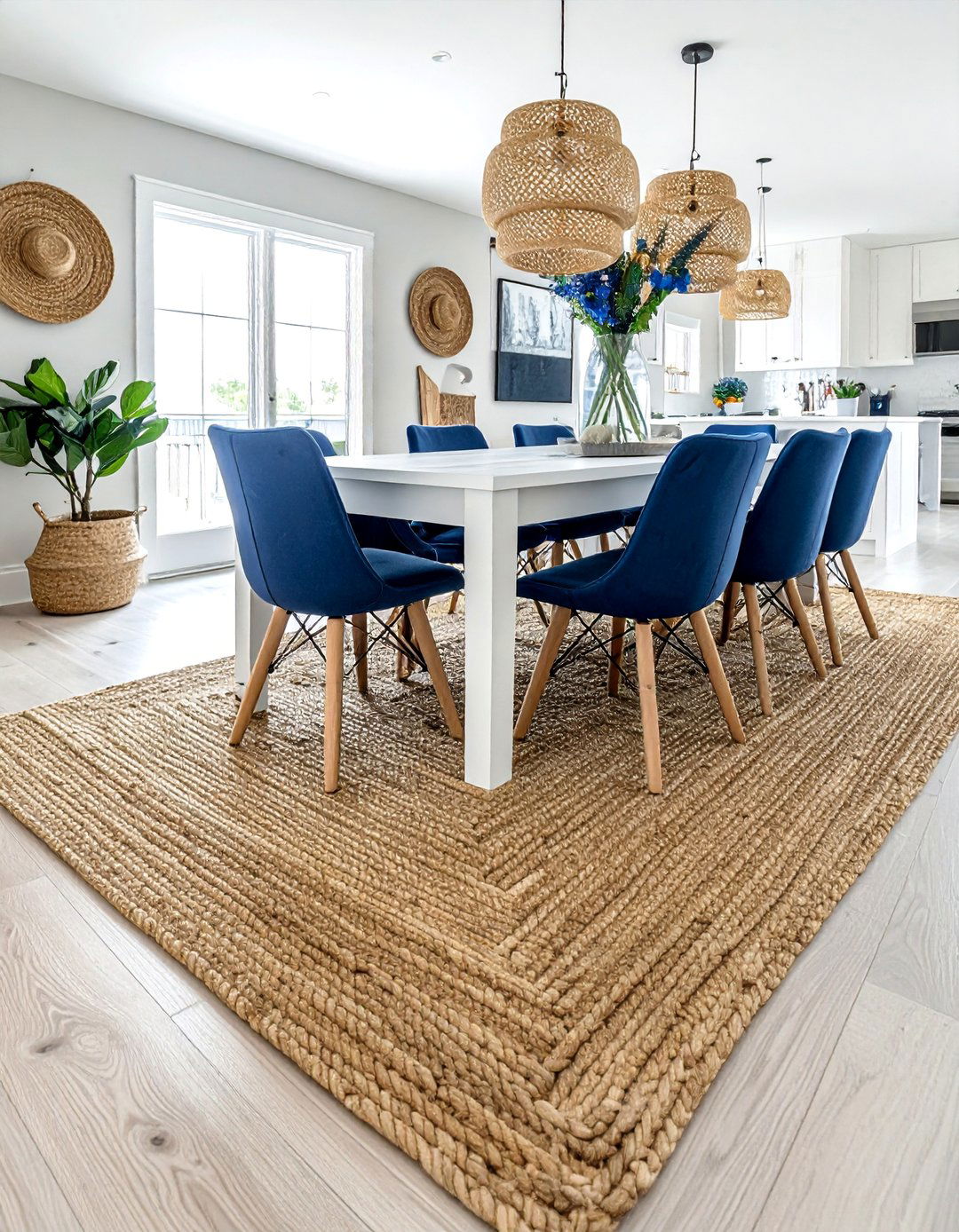
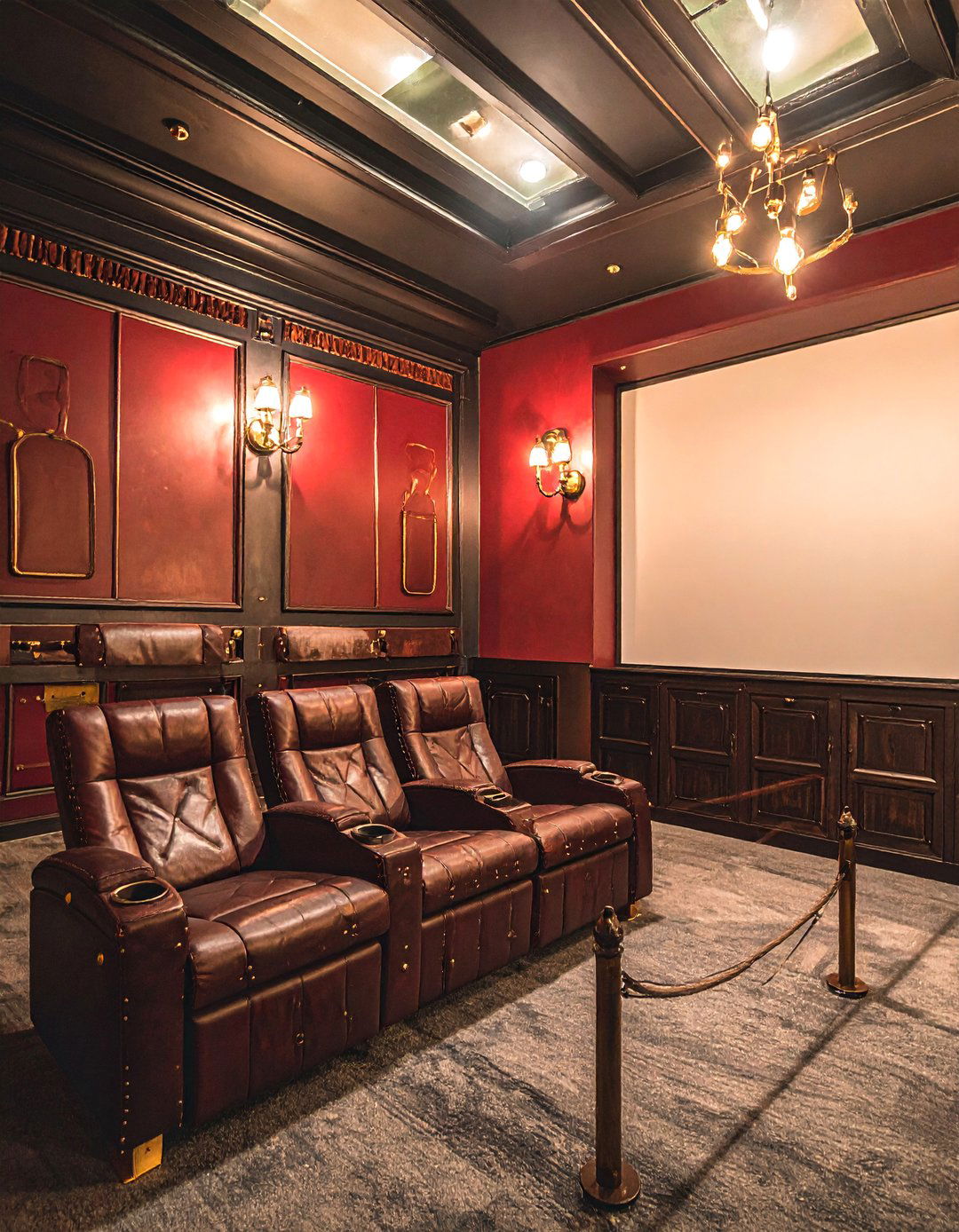
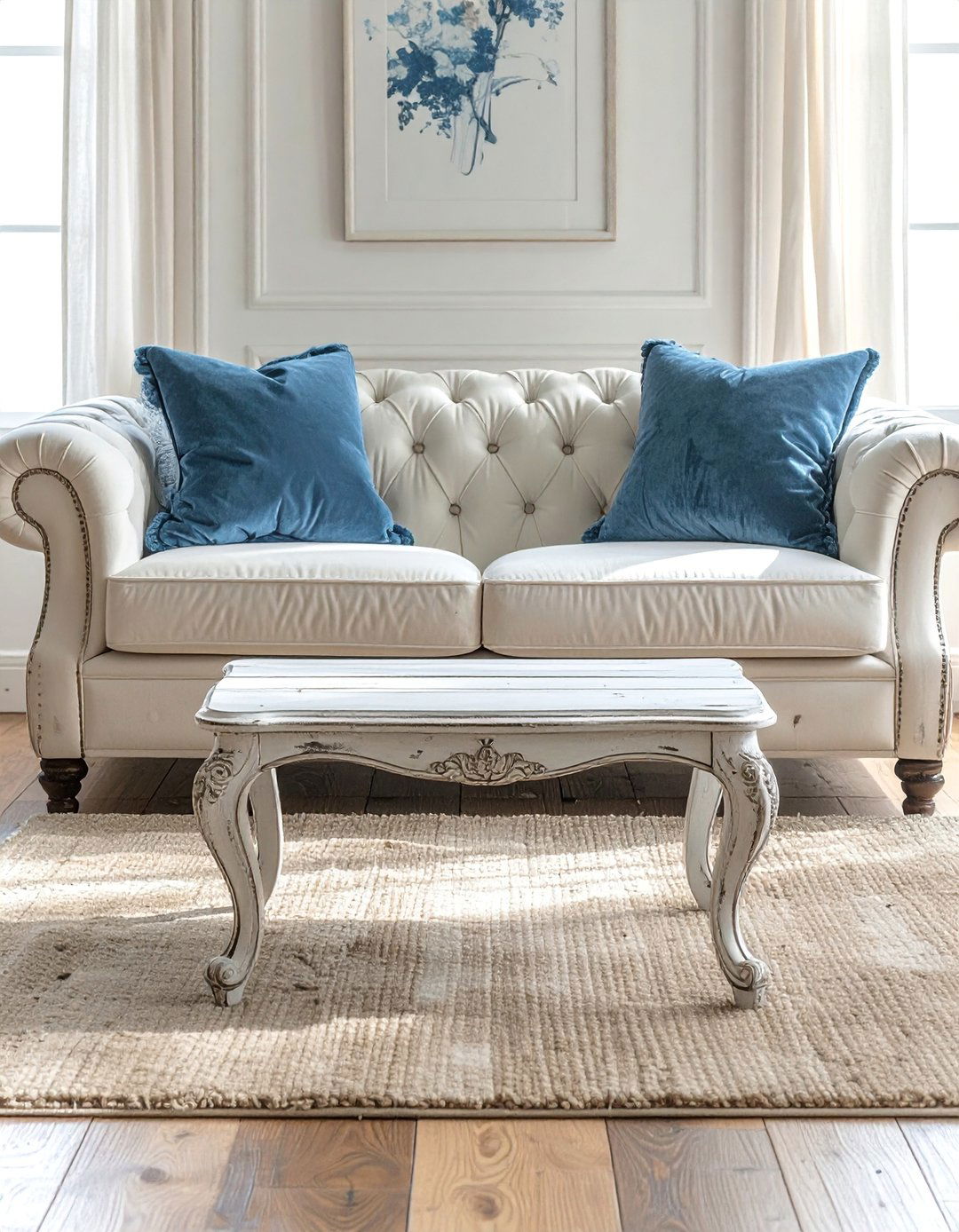
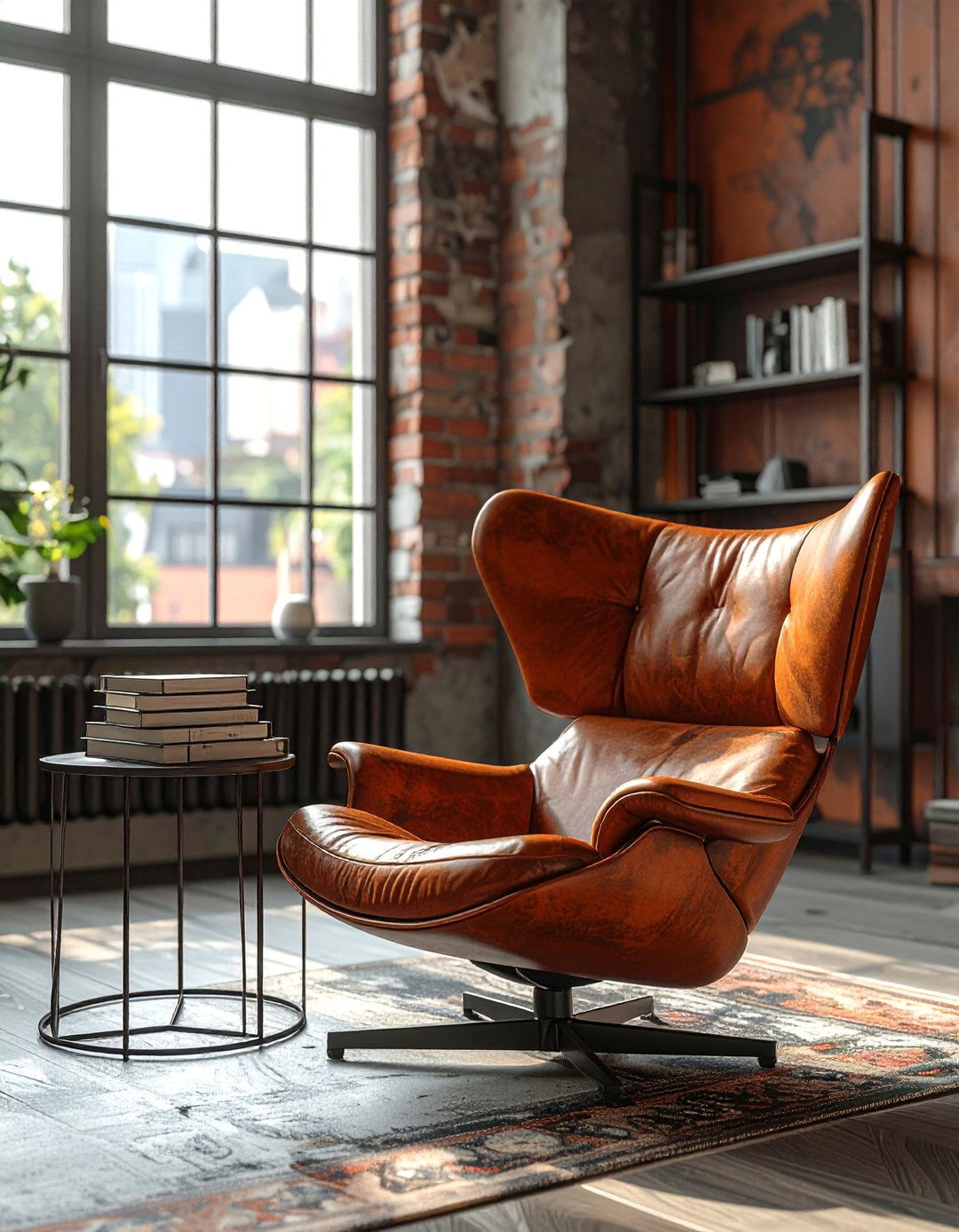
Leave a Reply